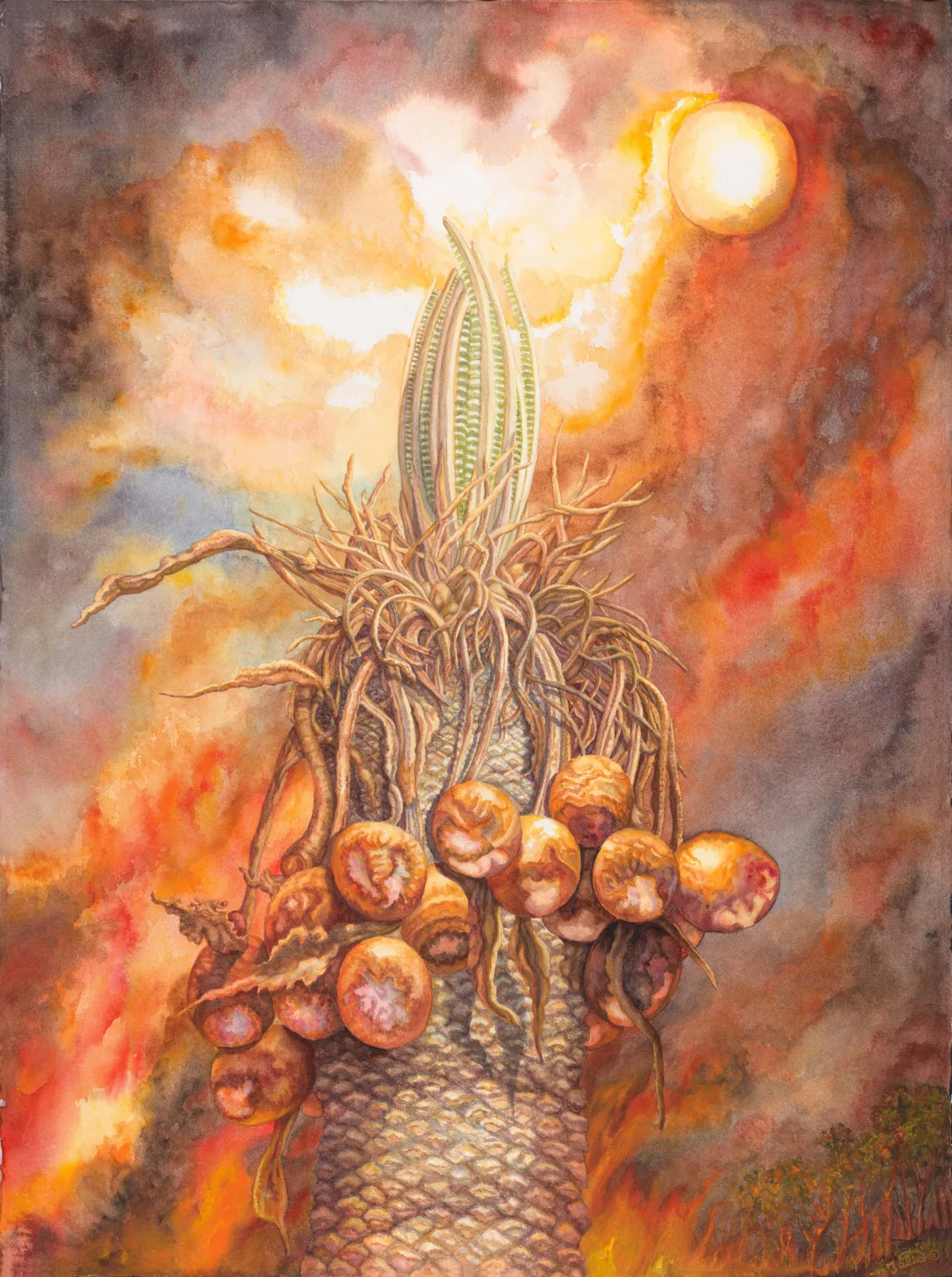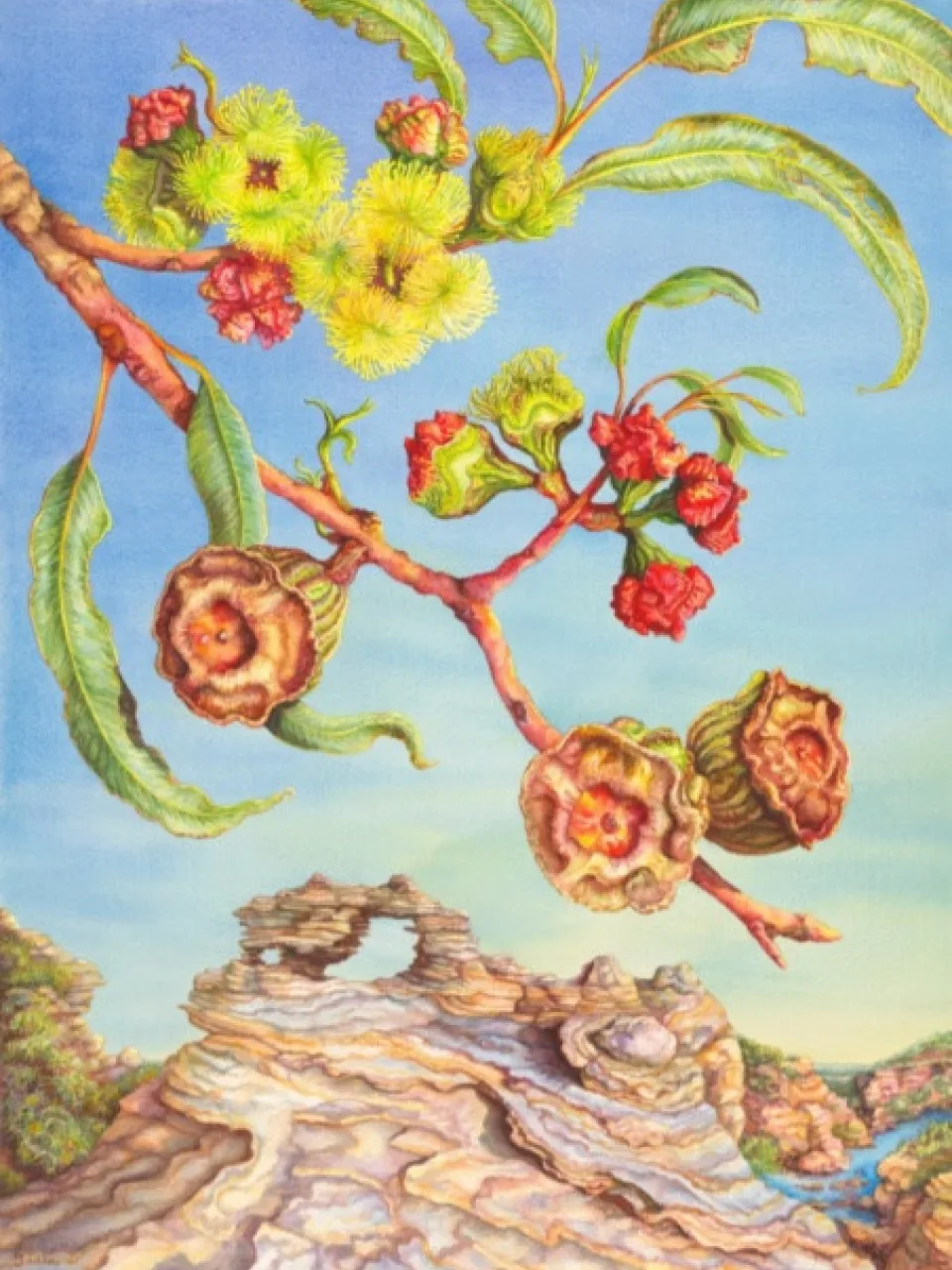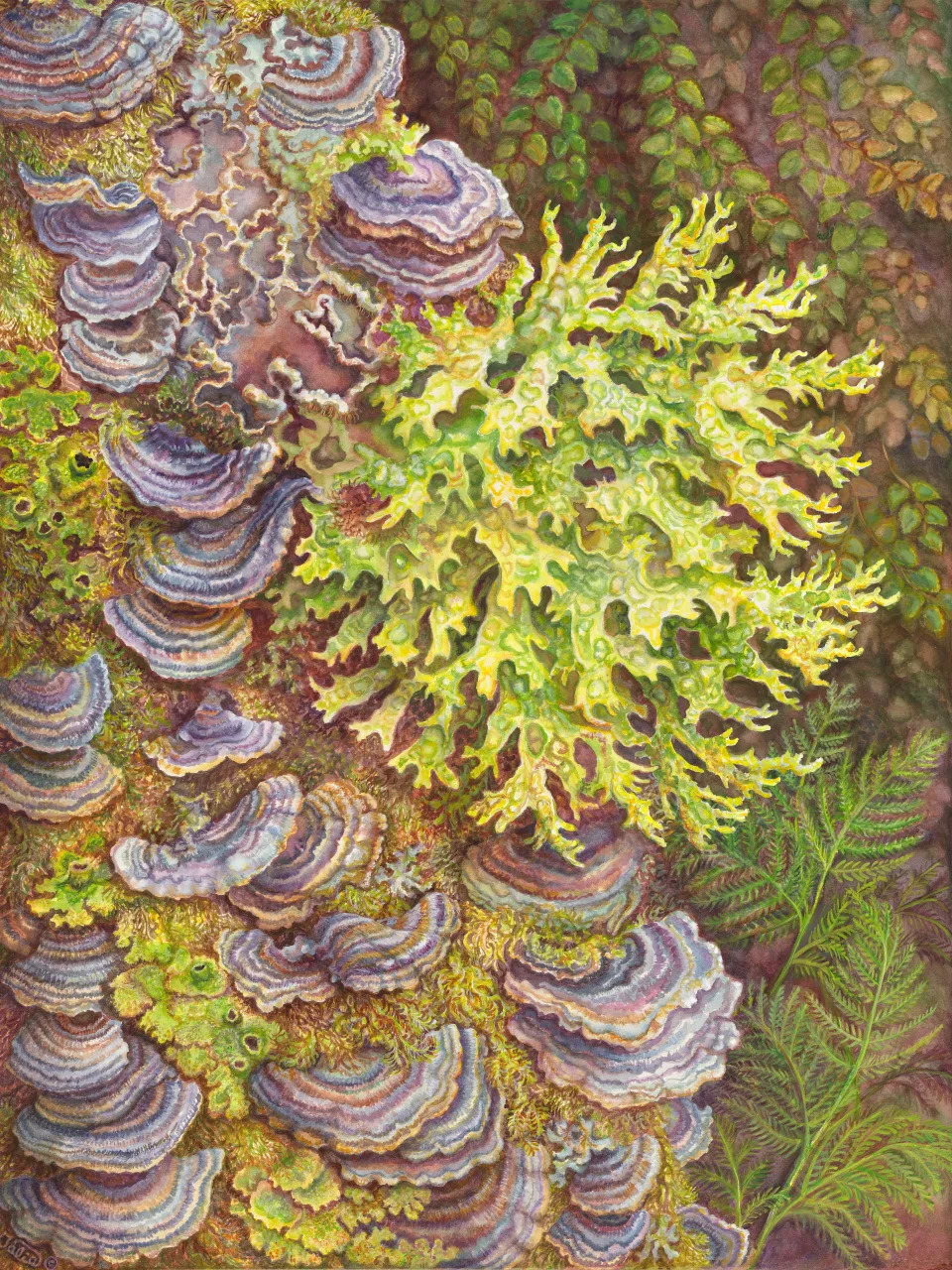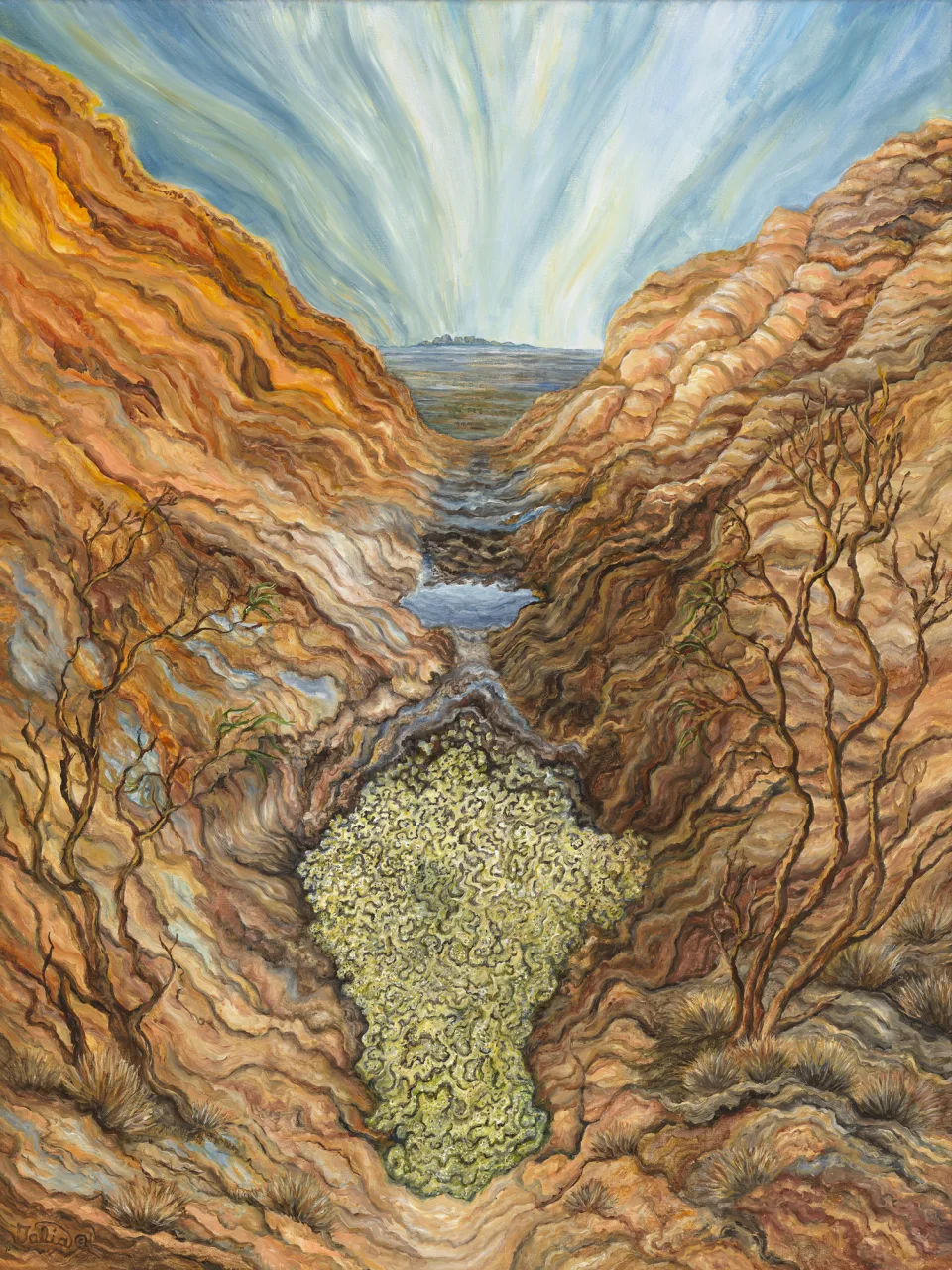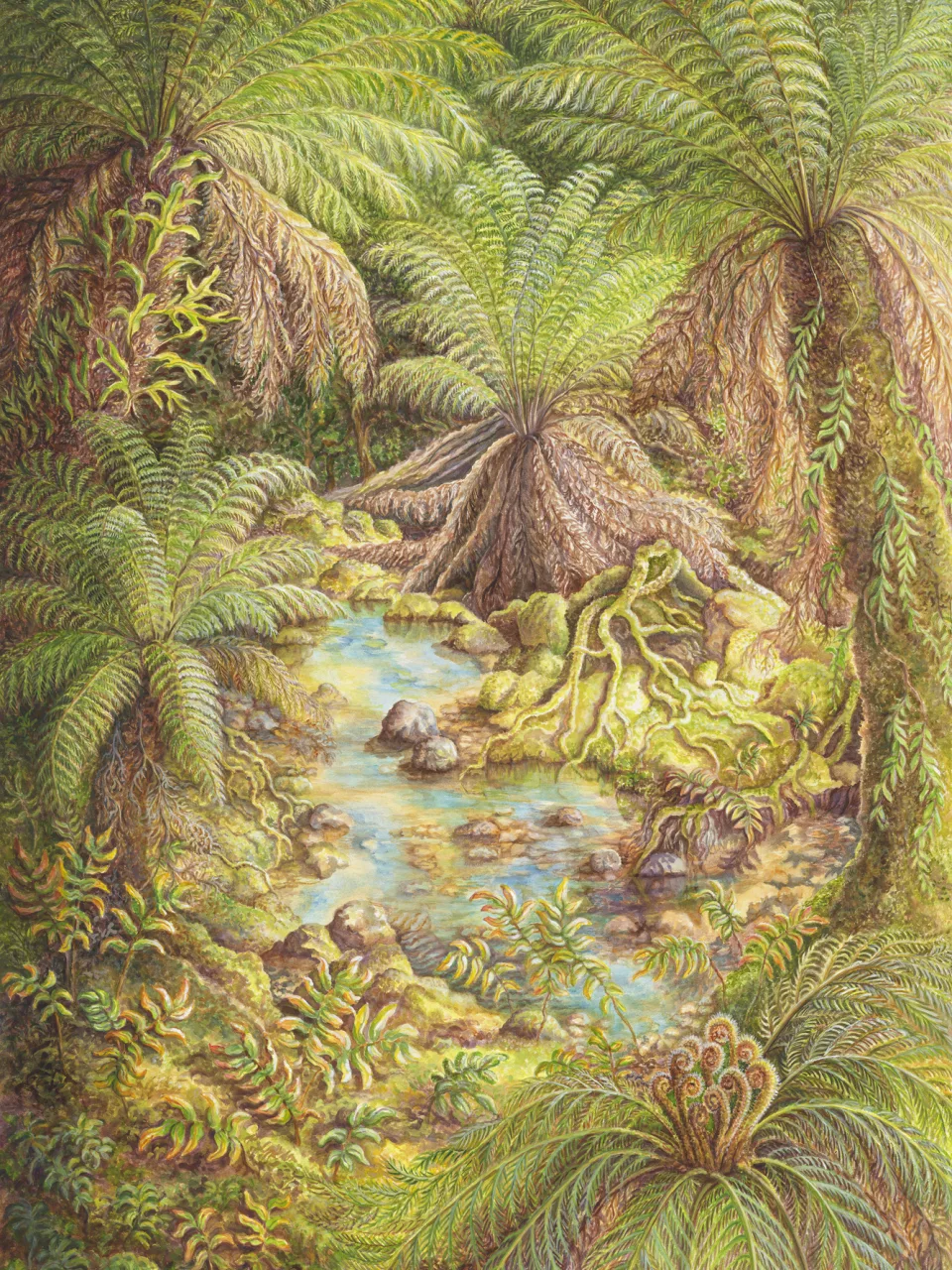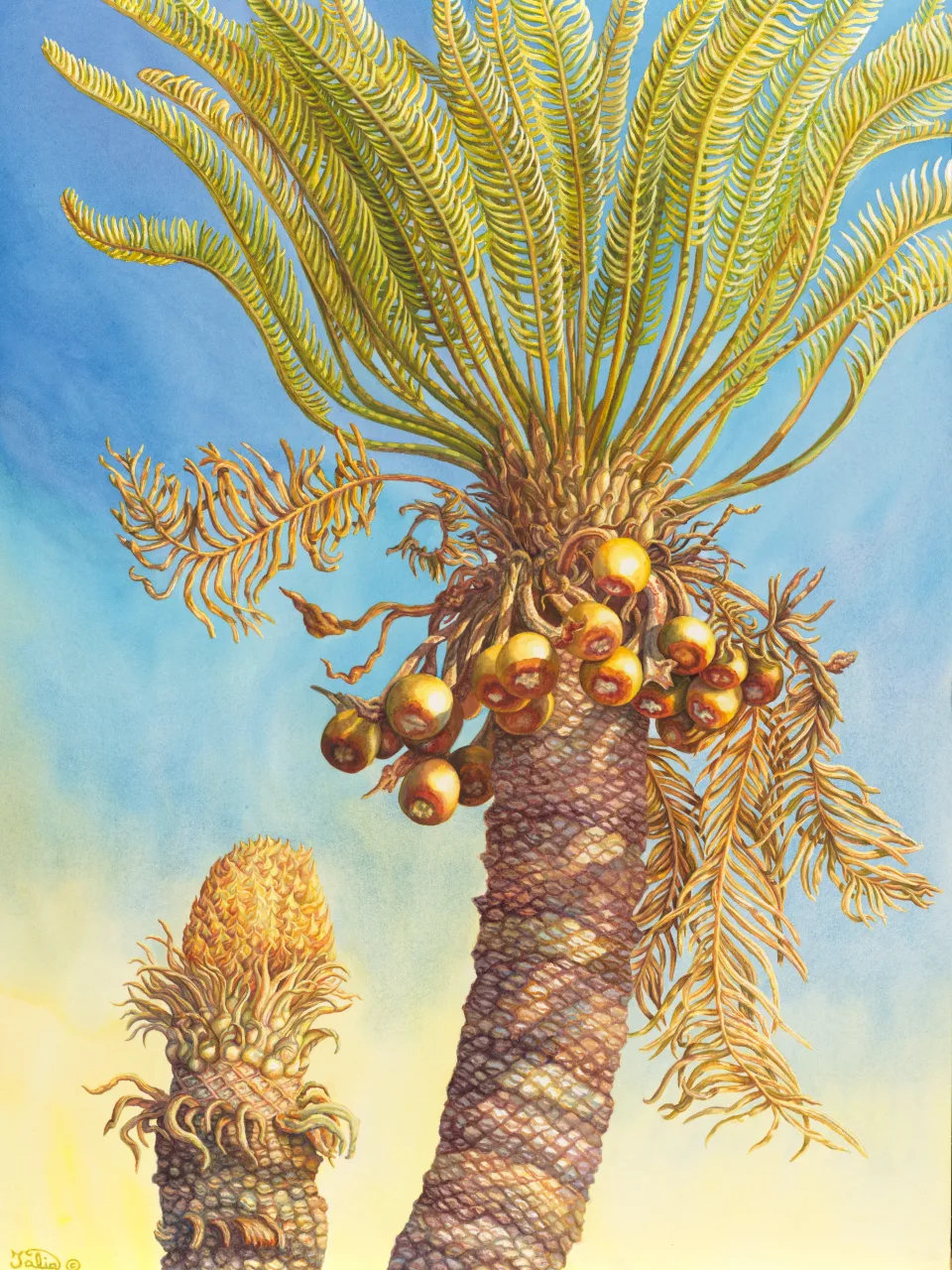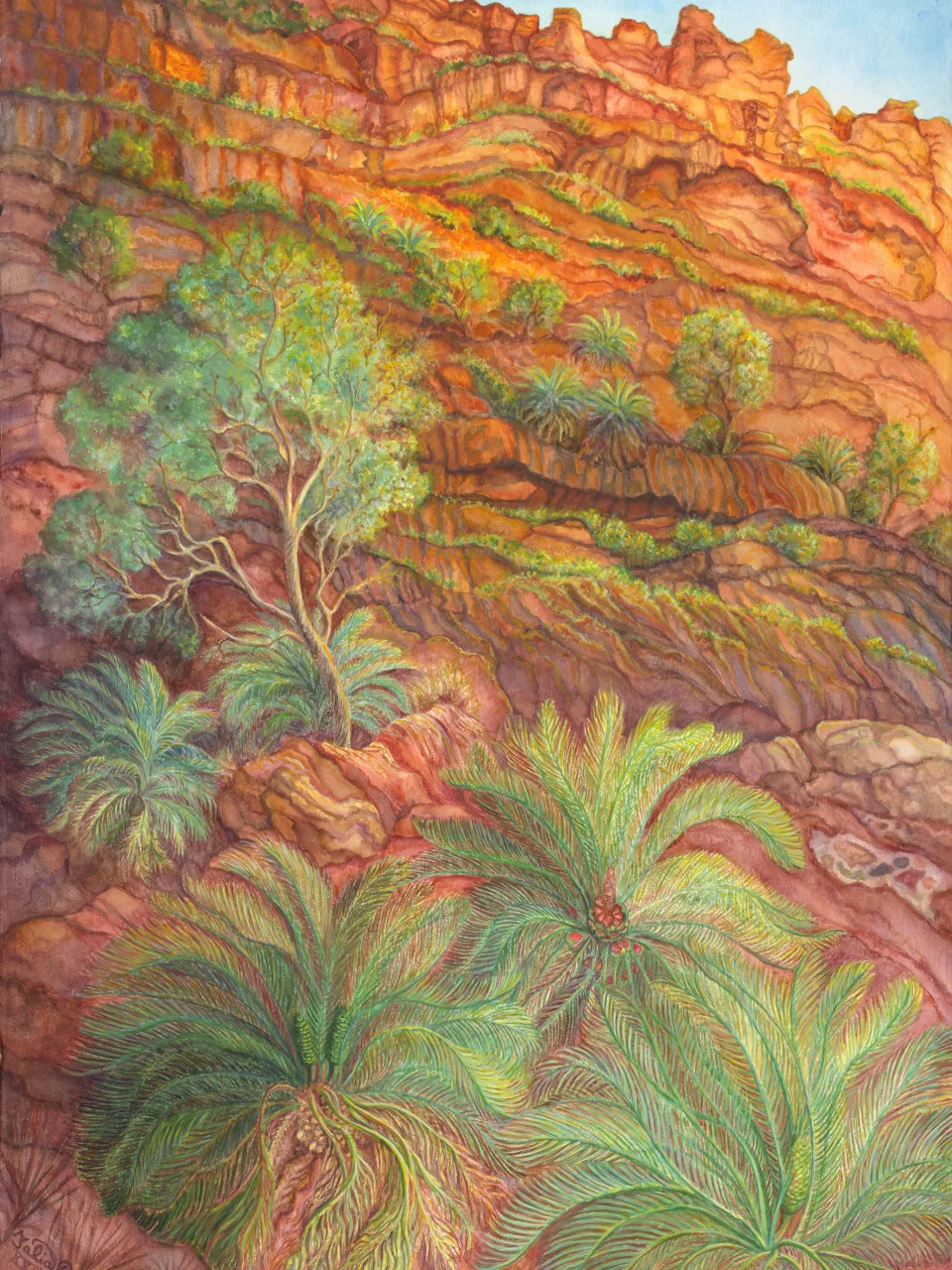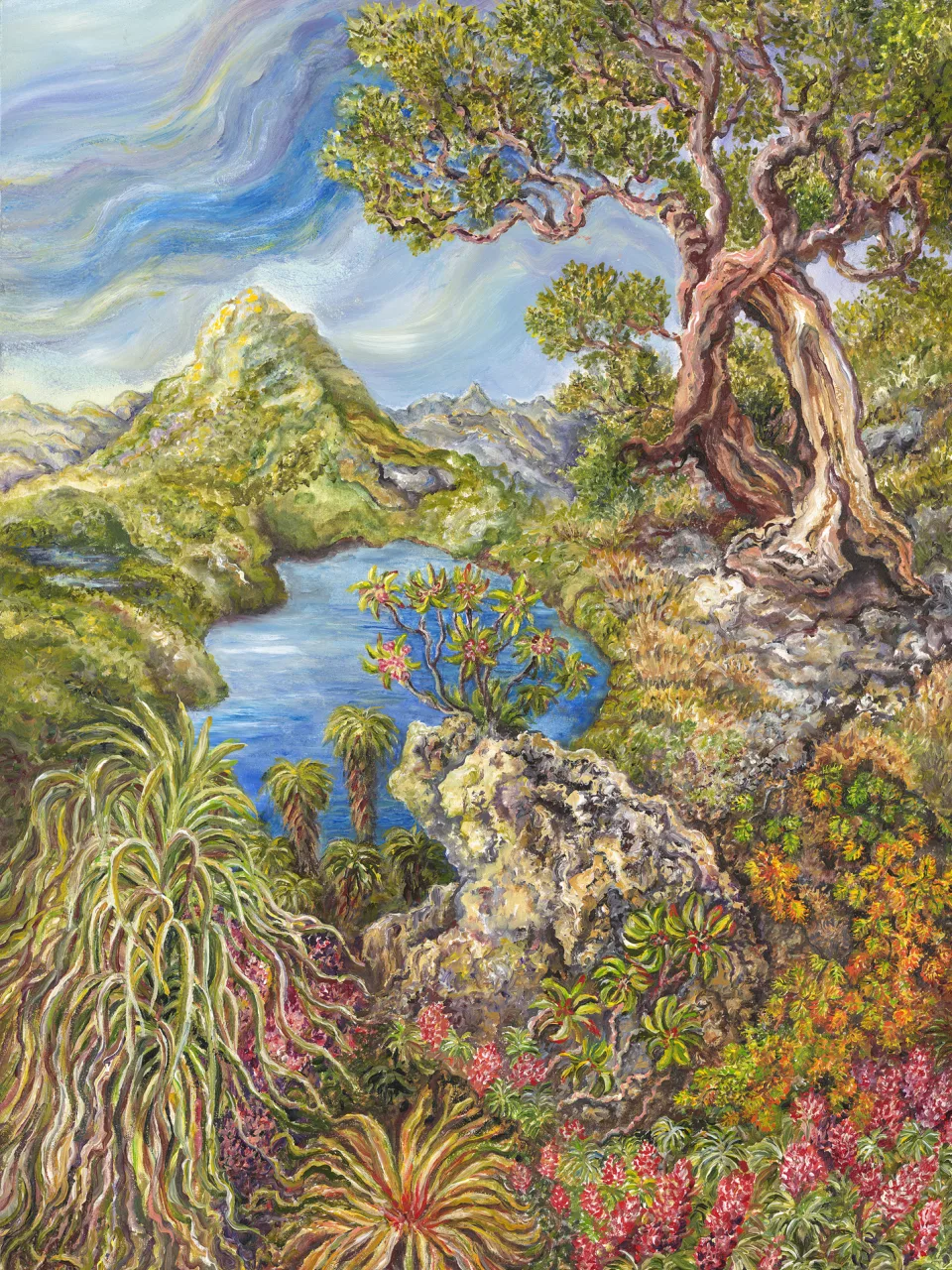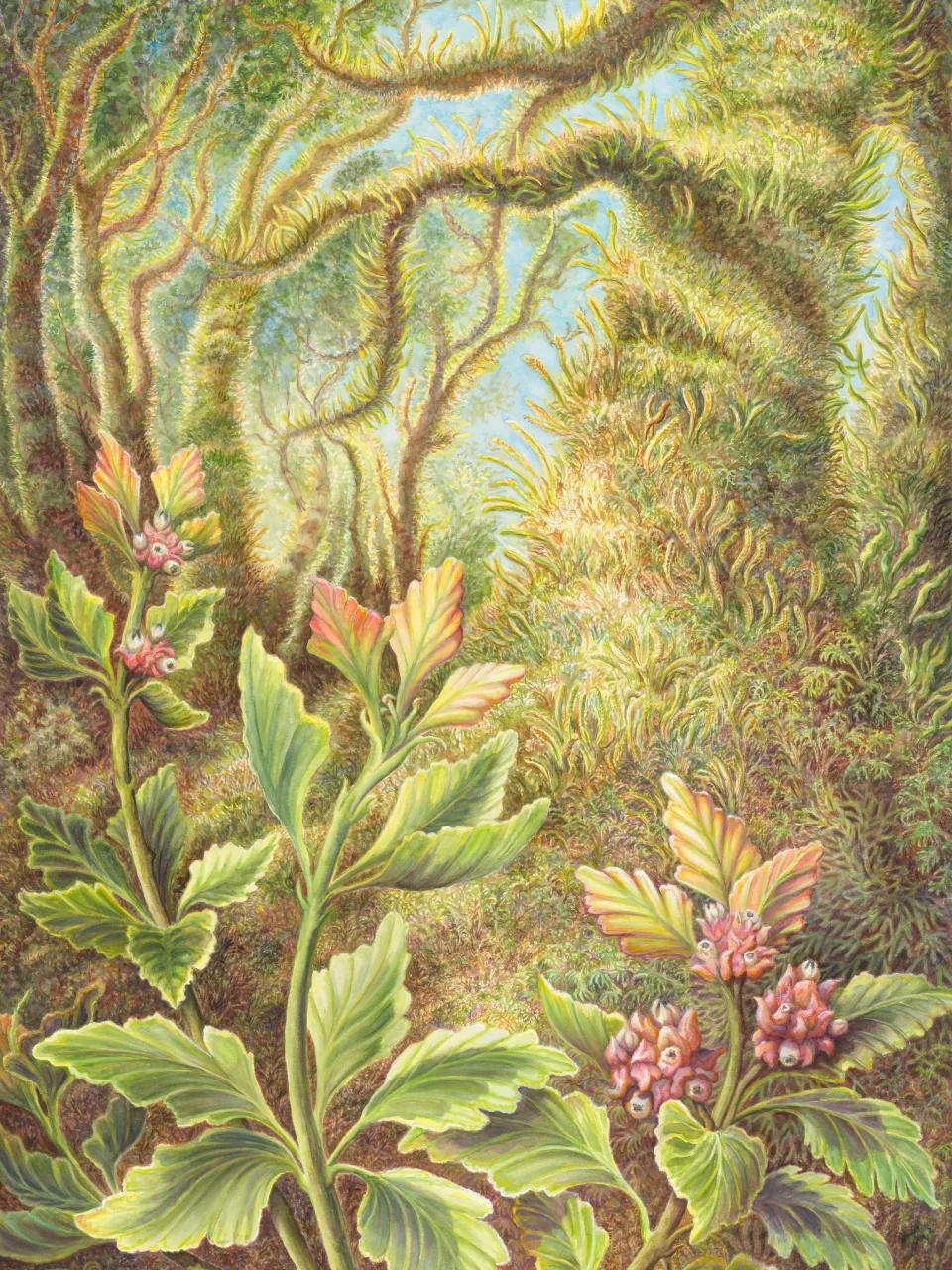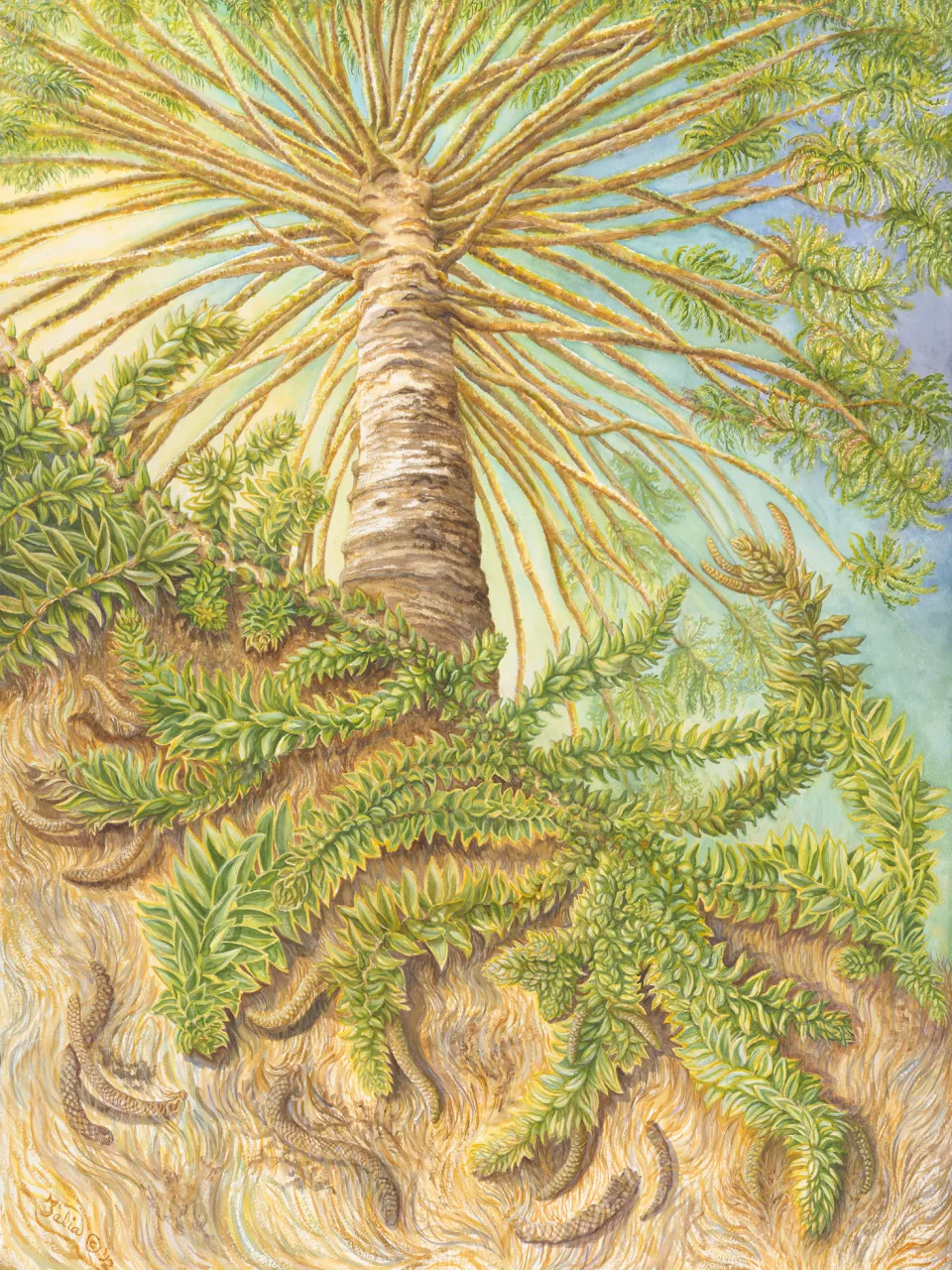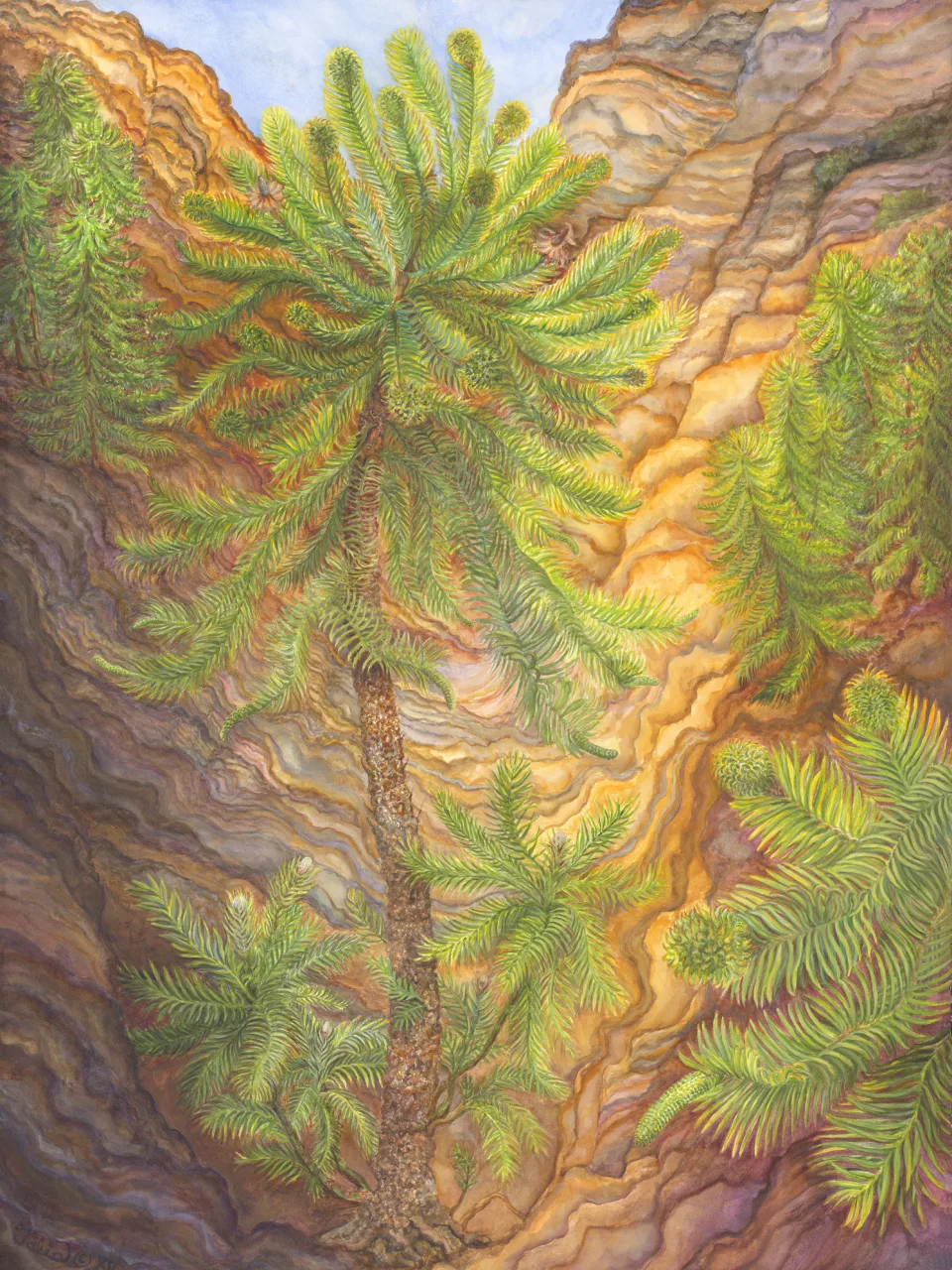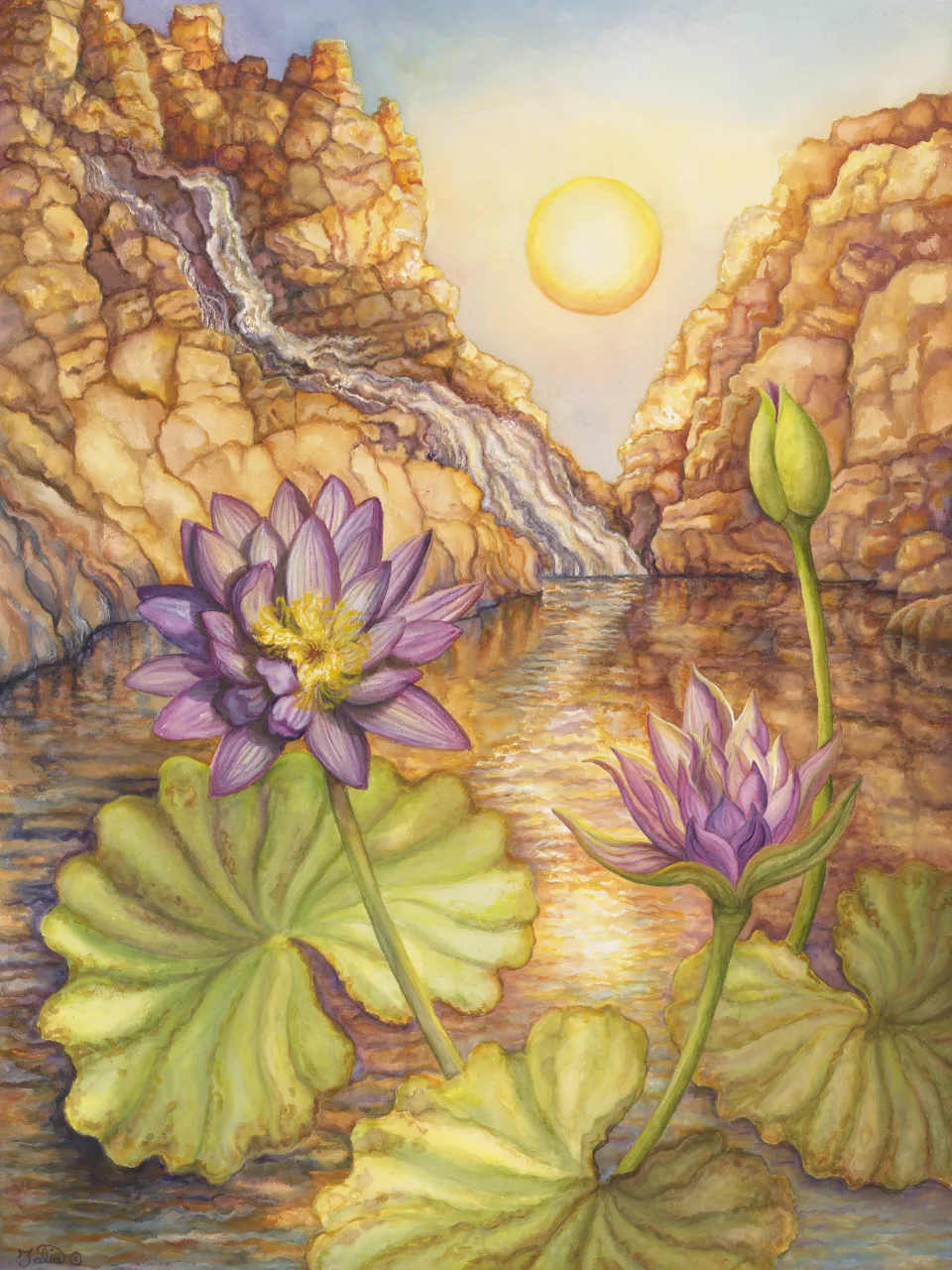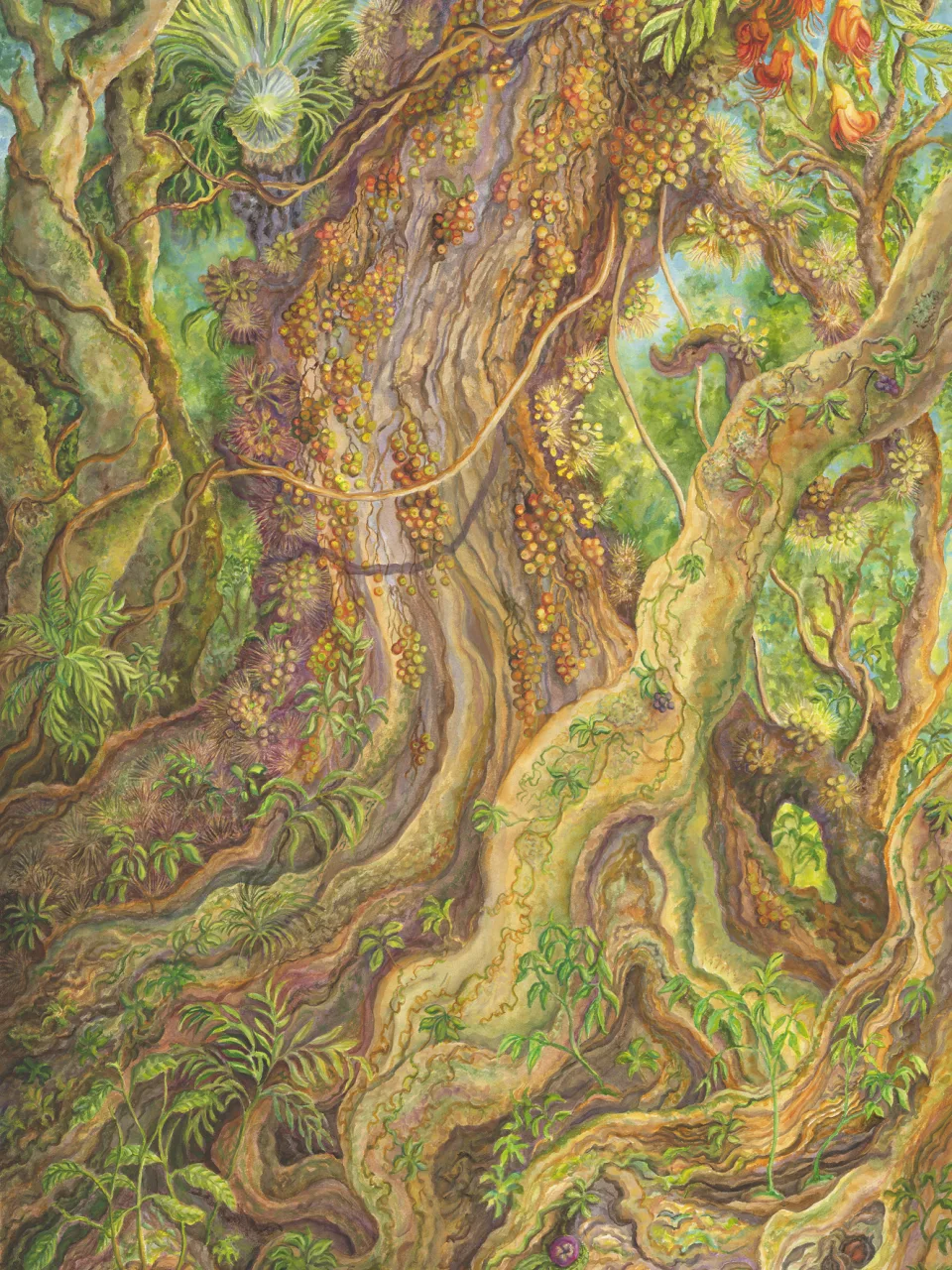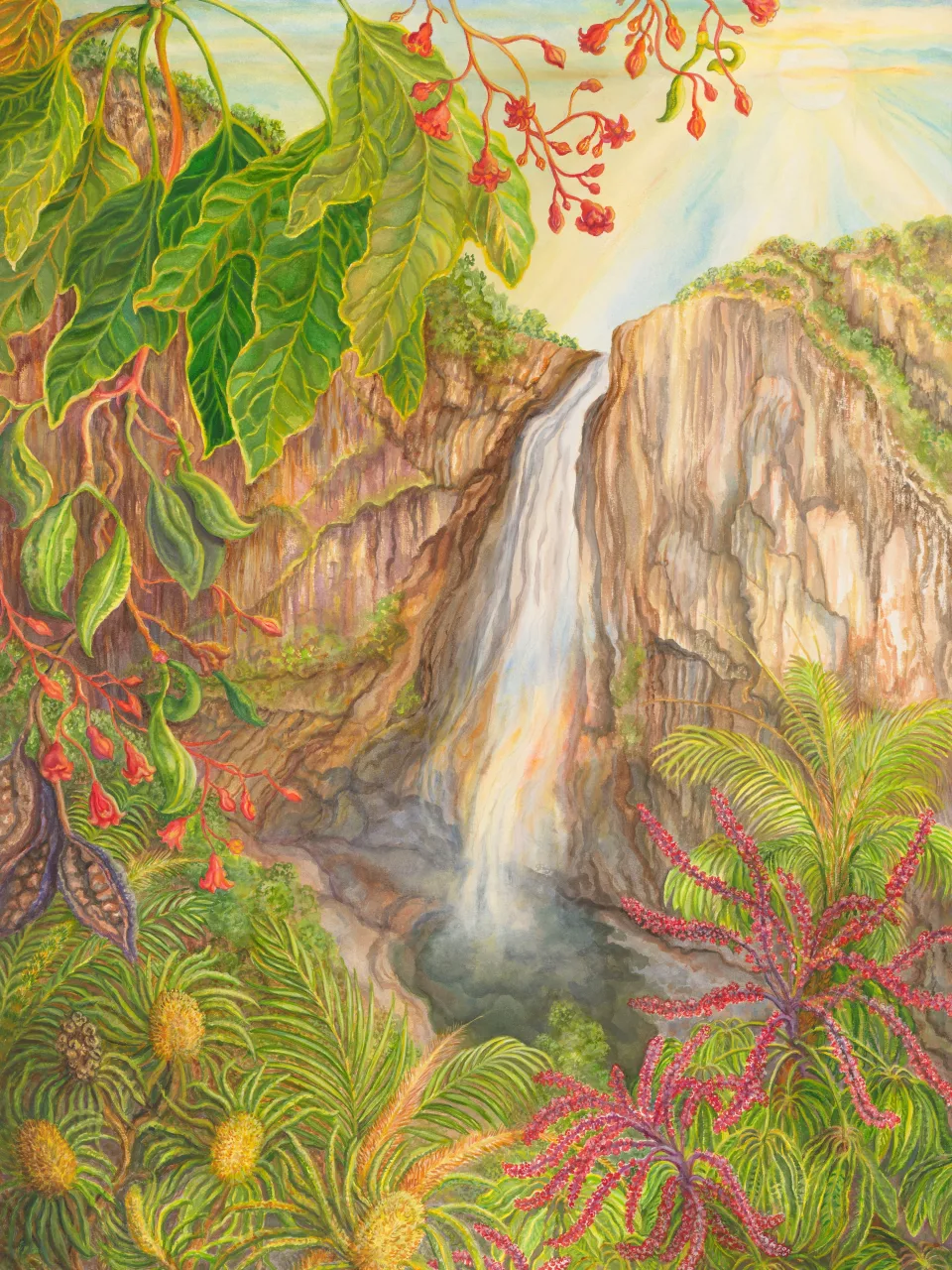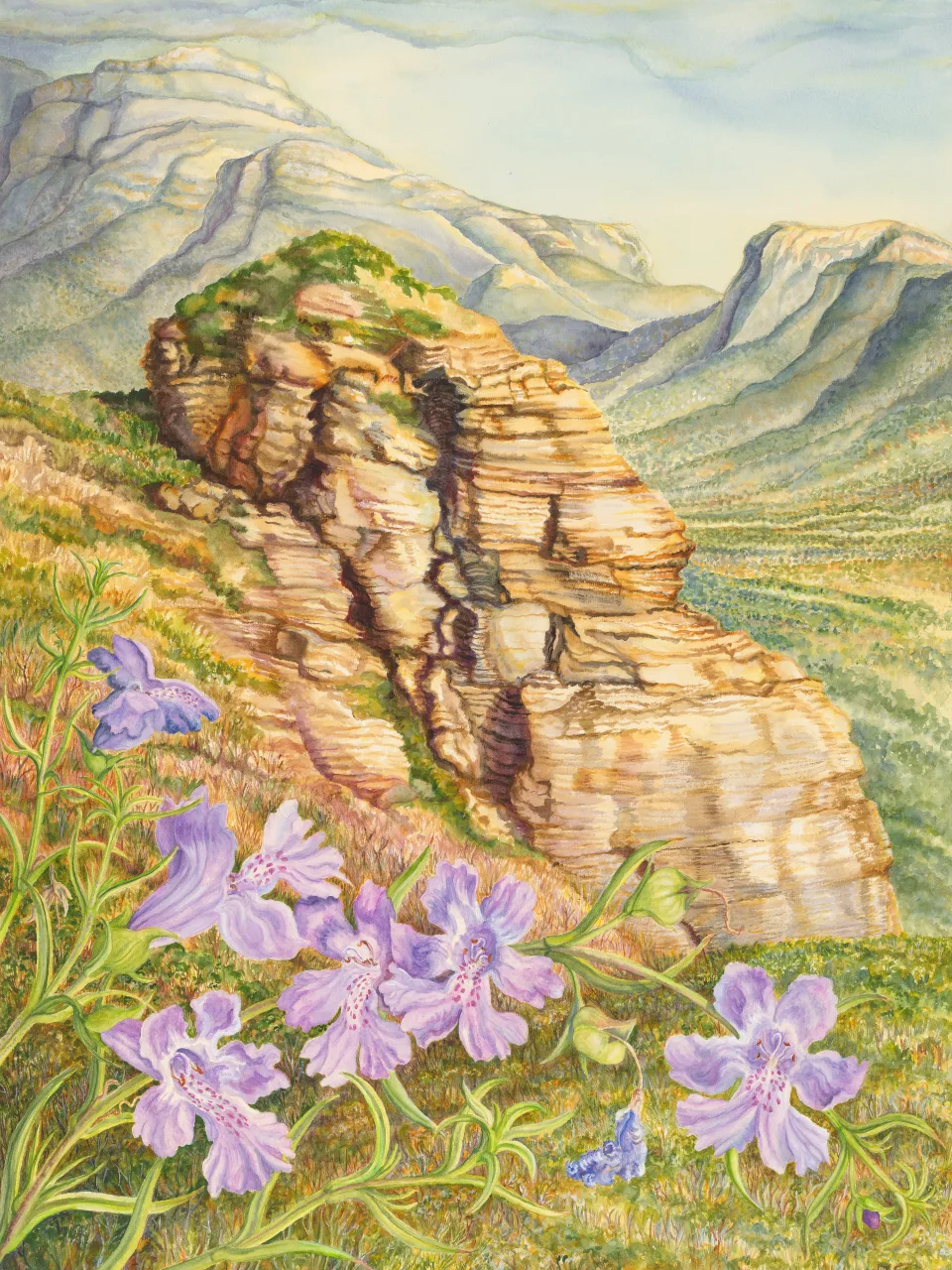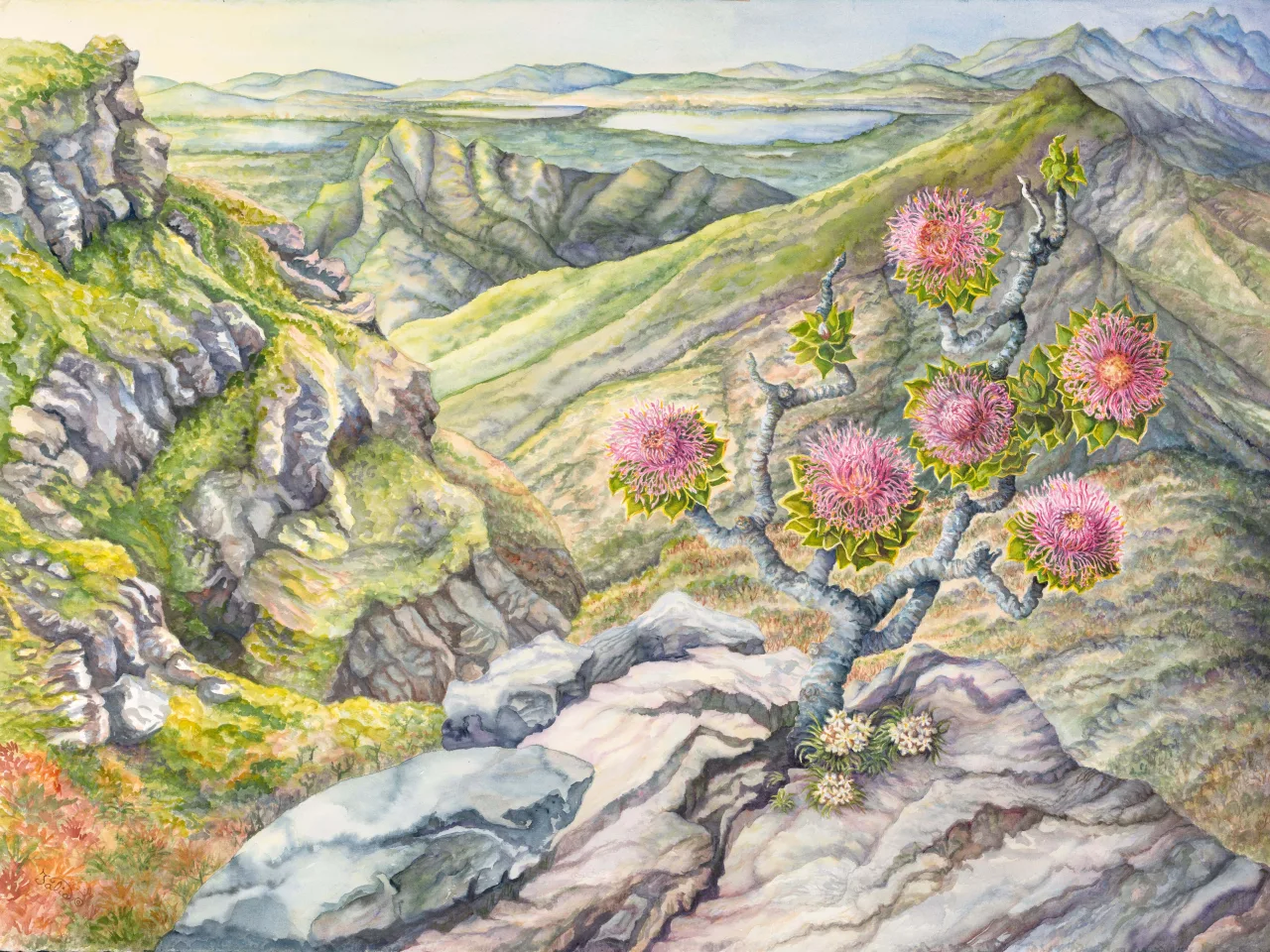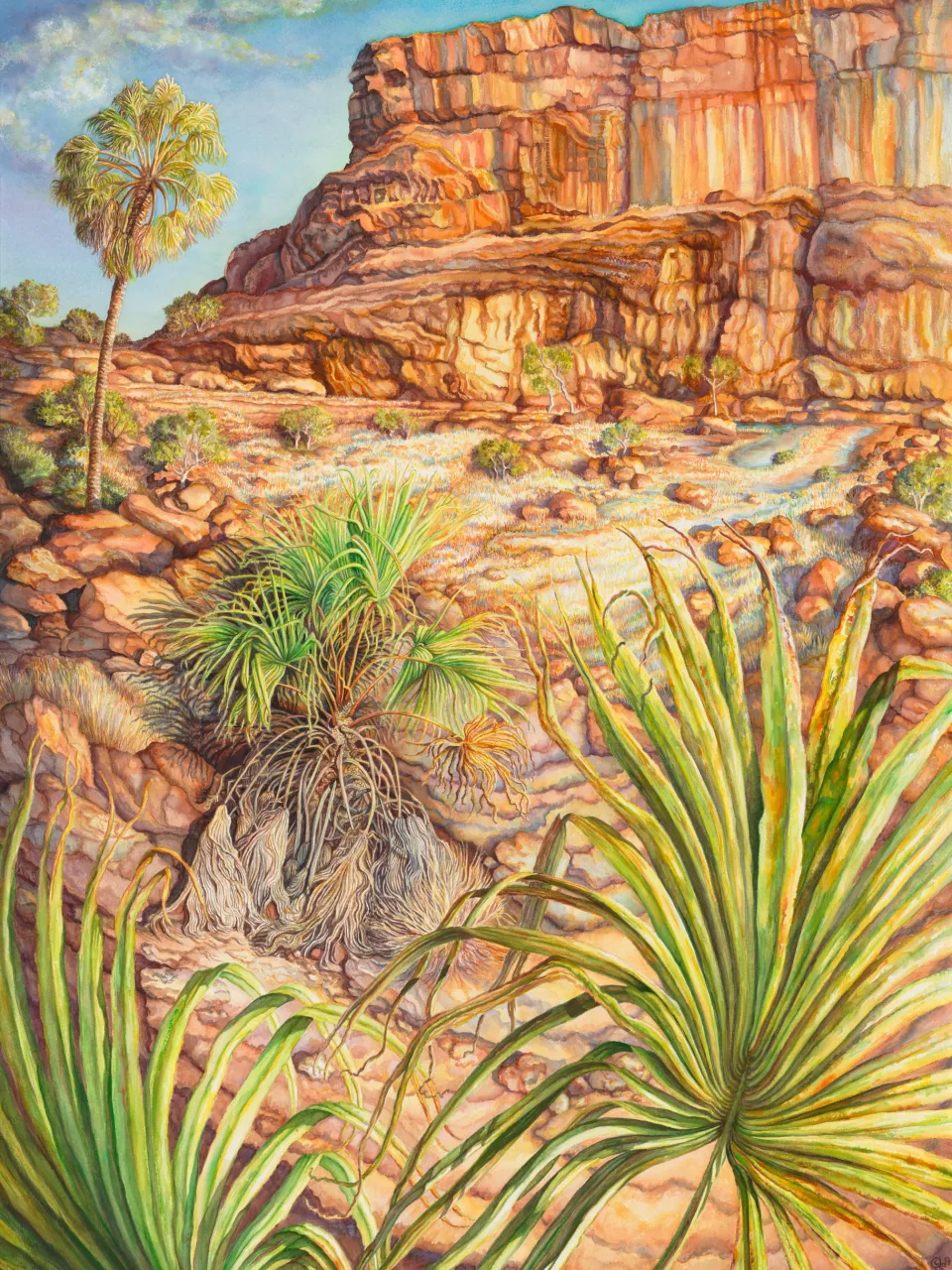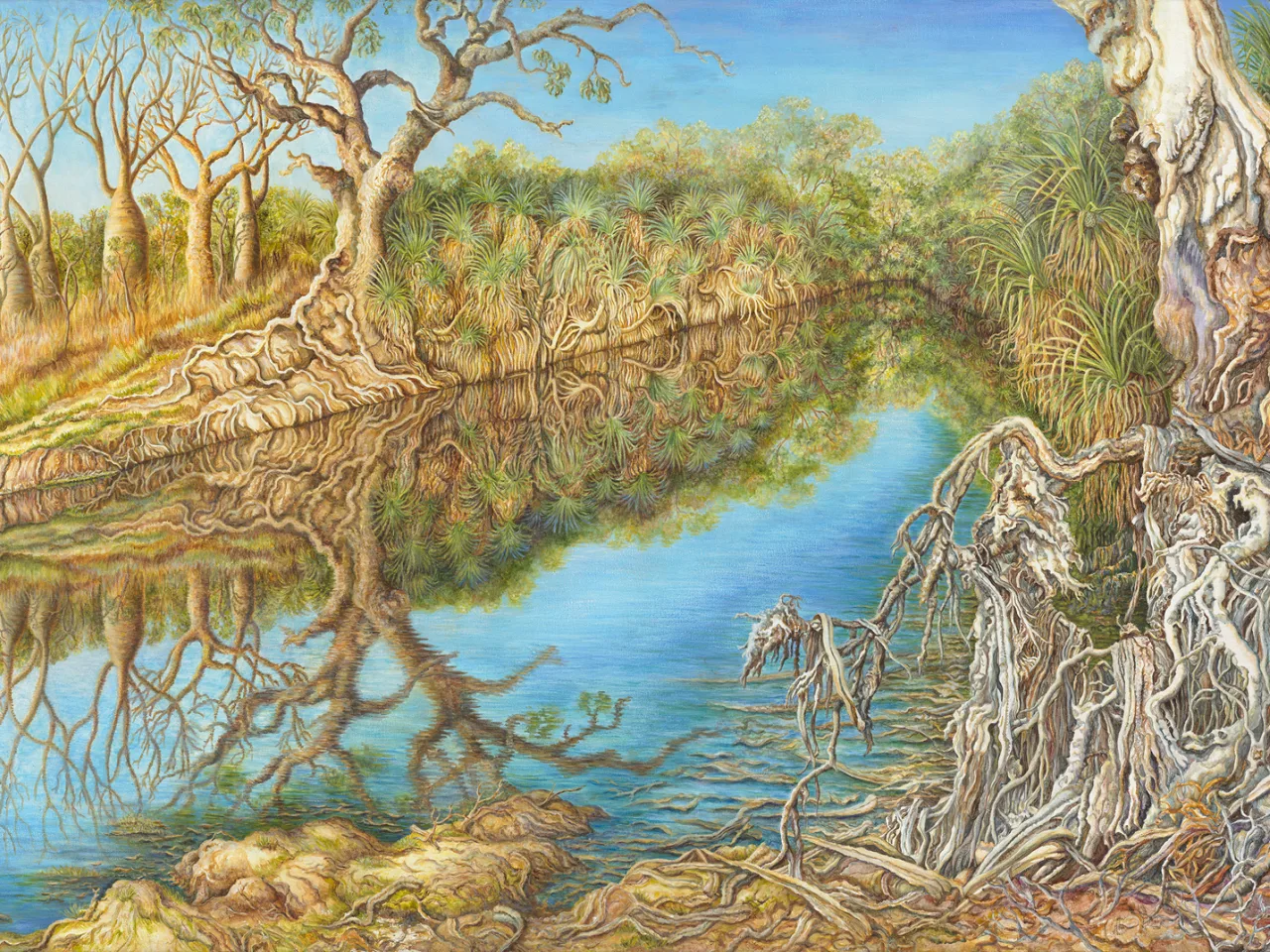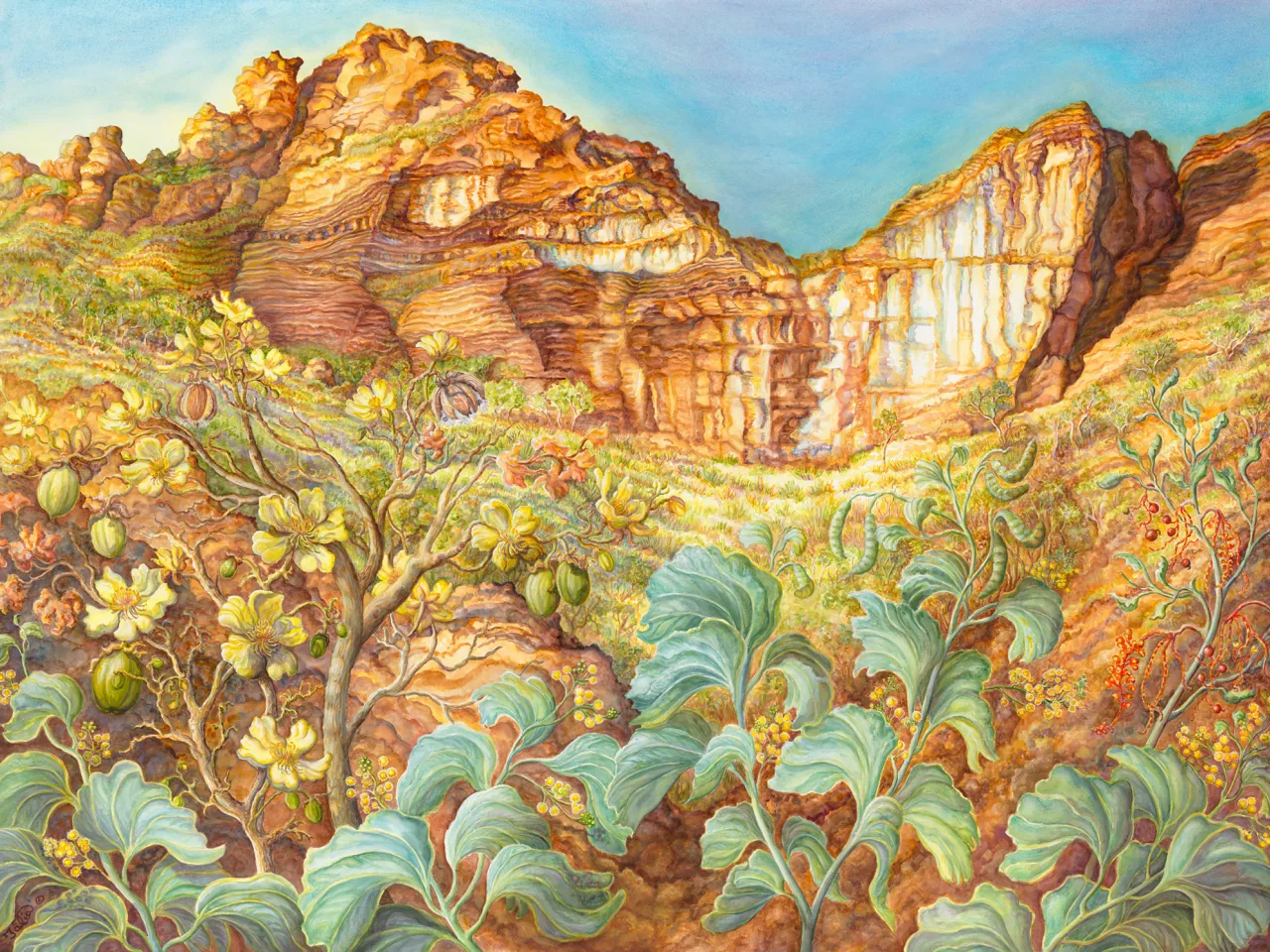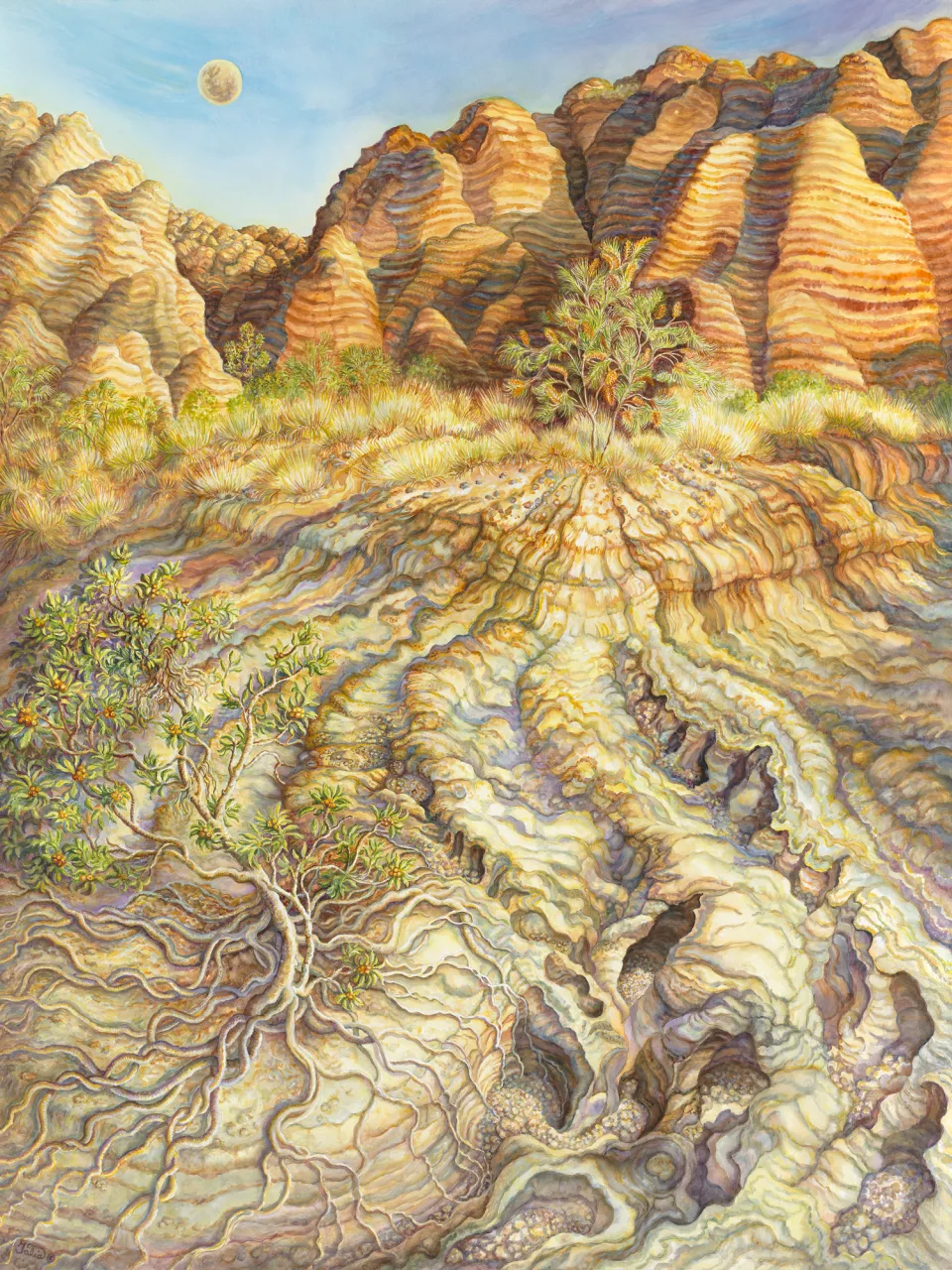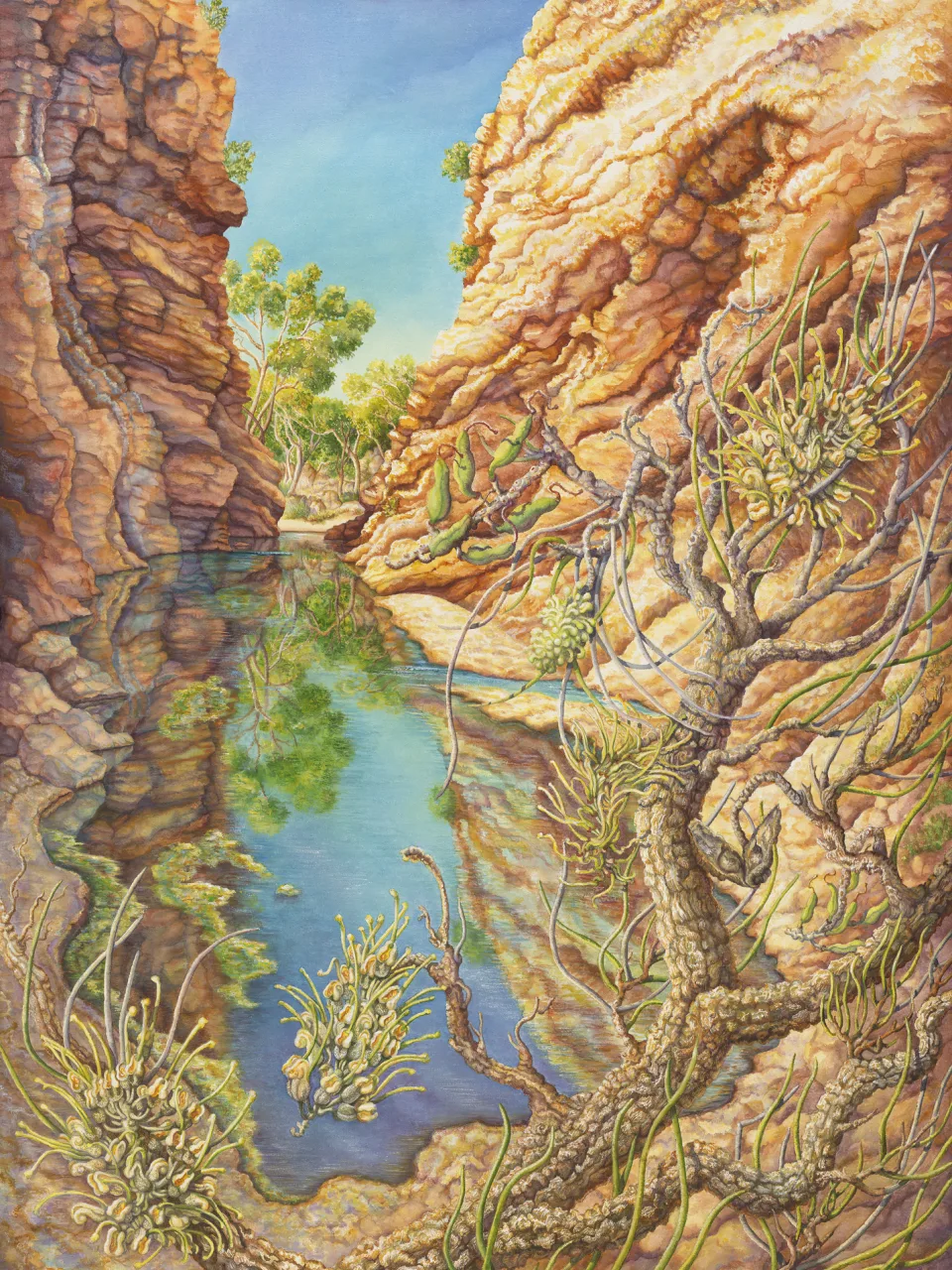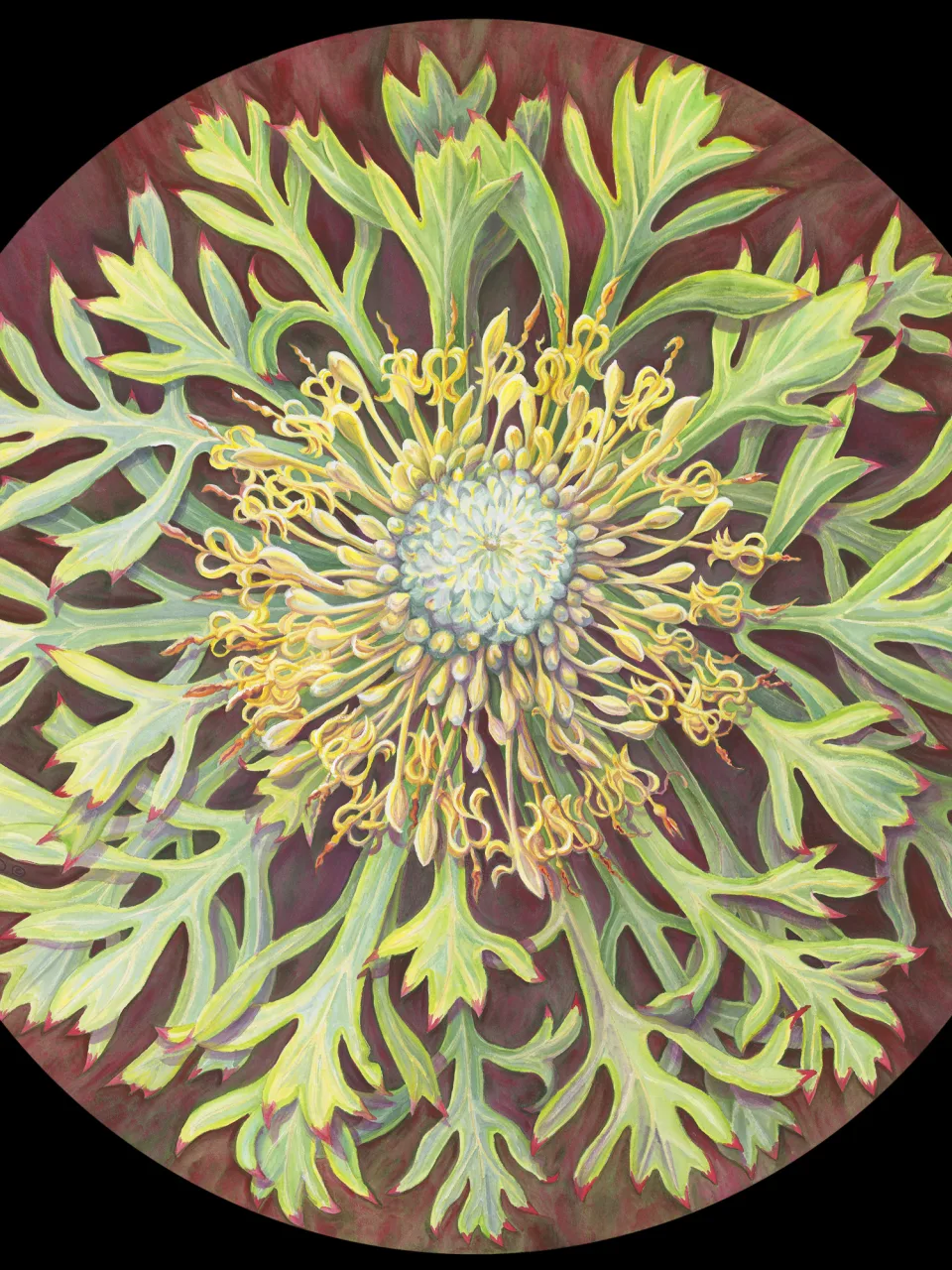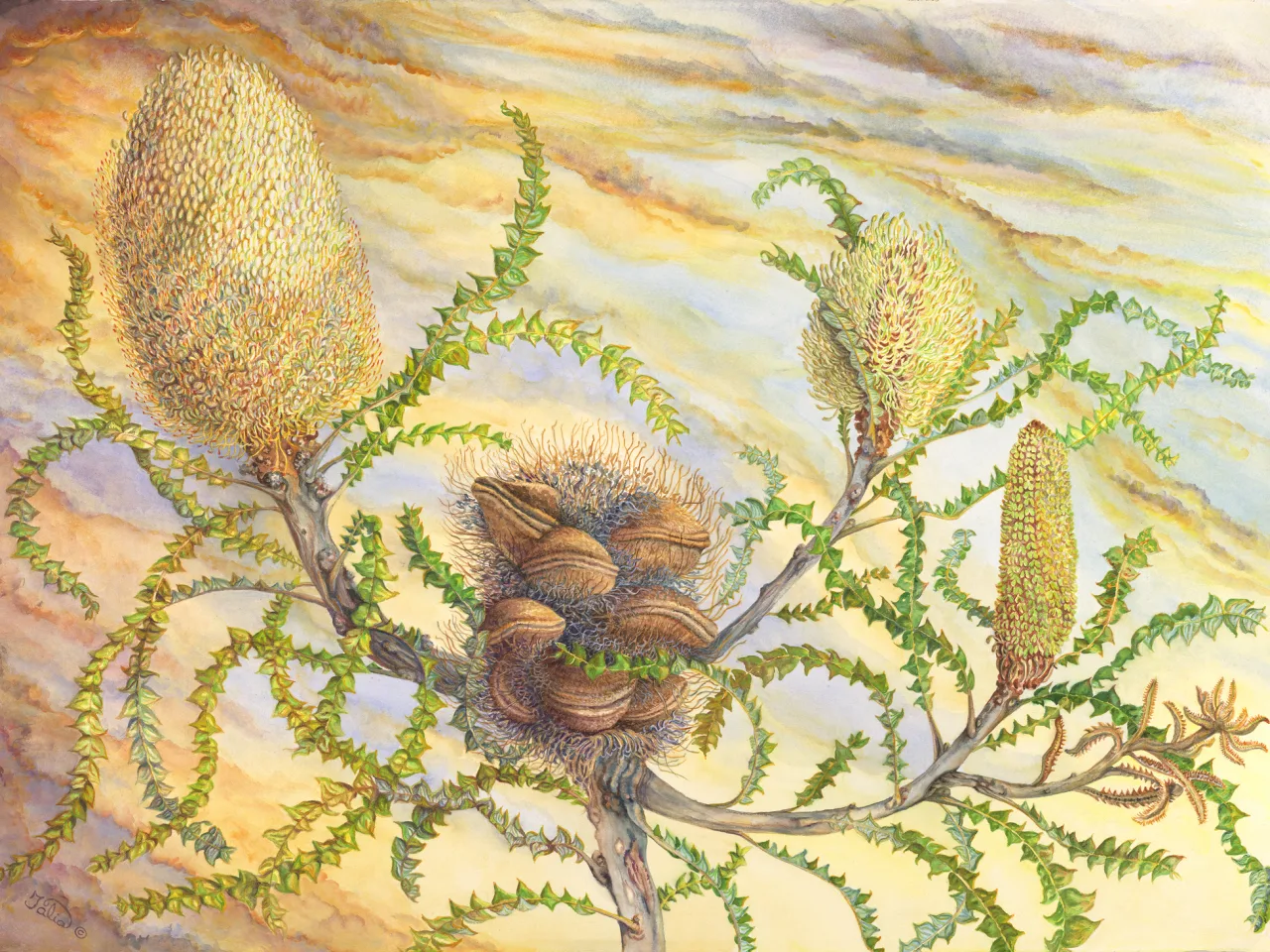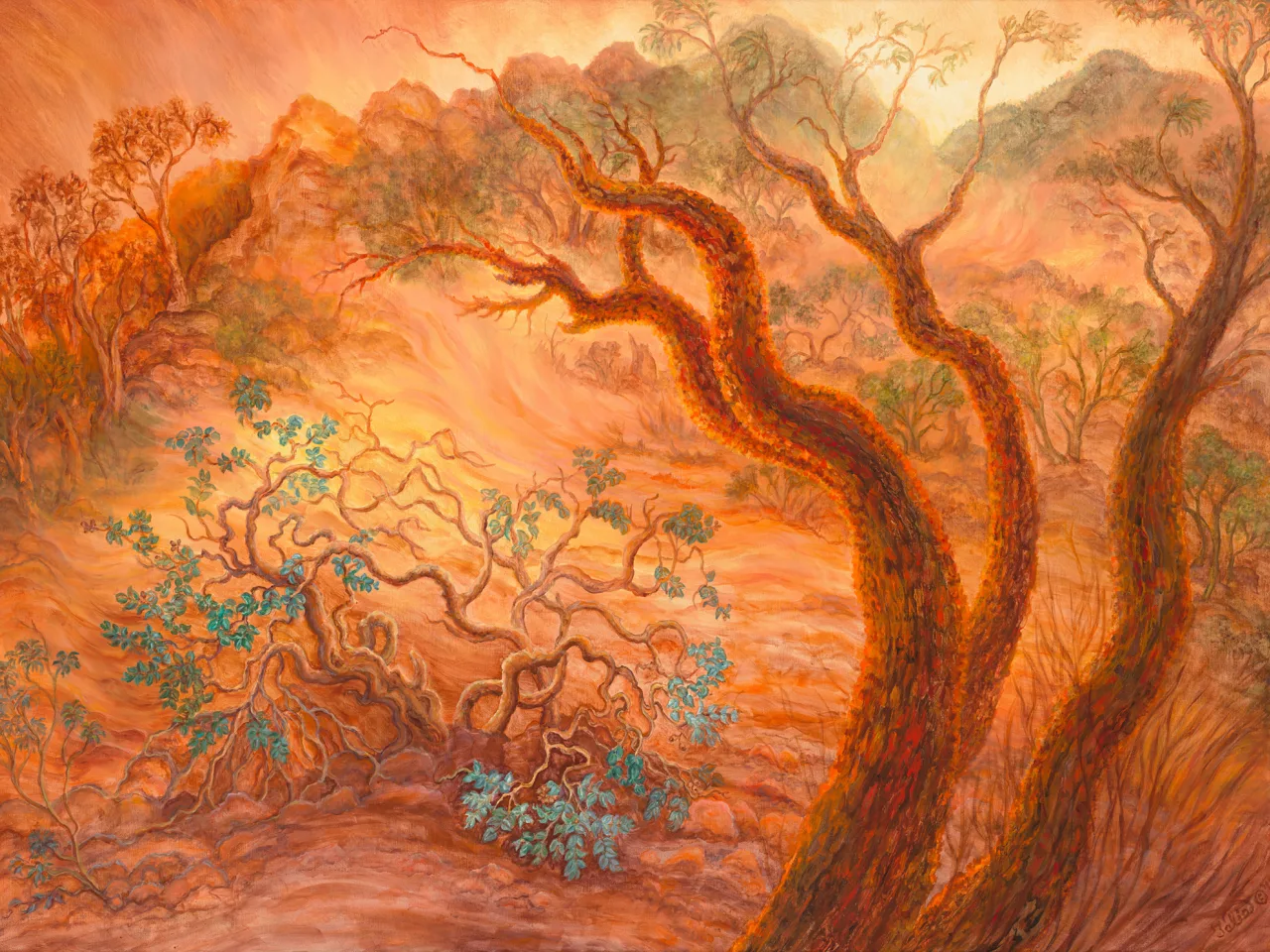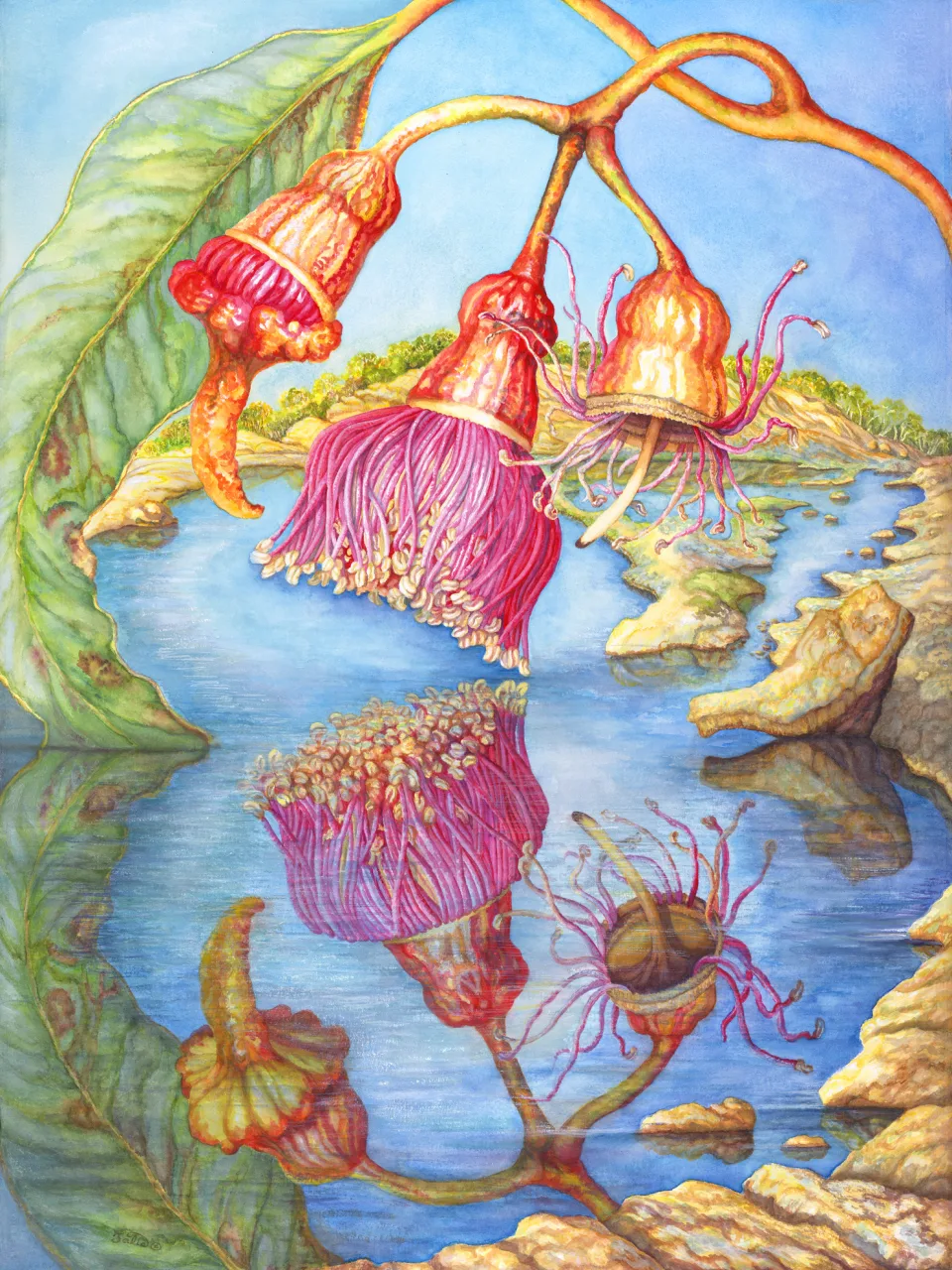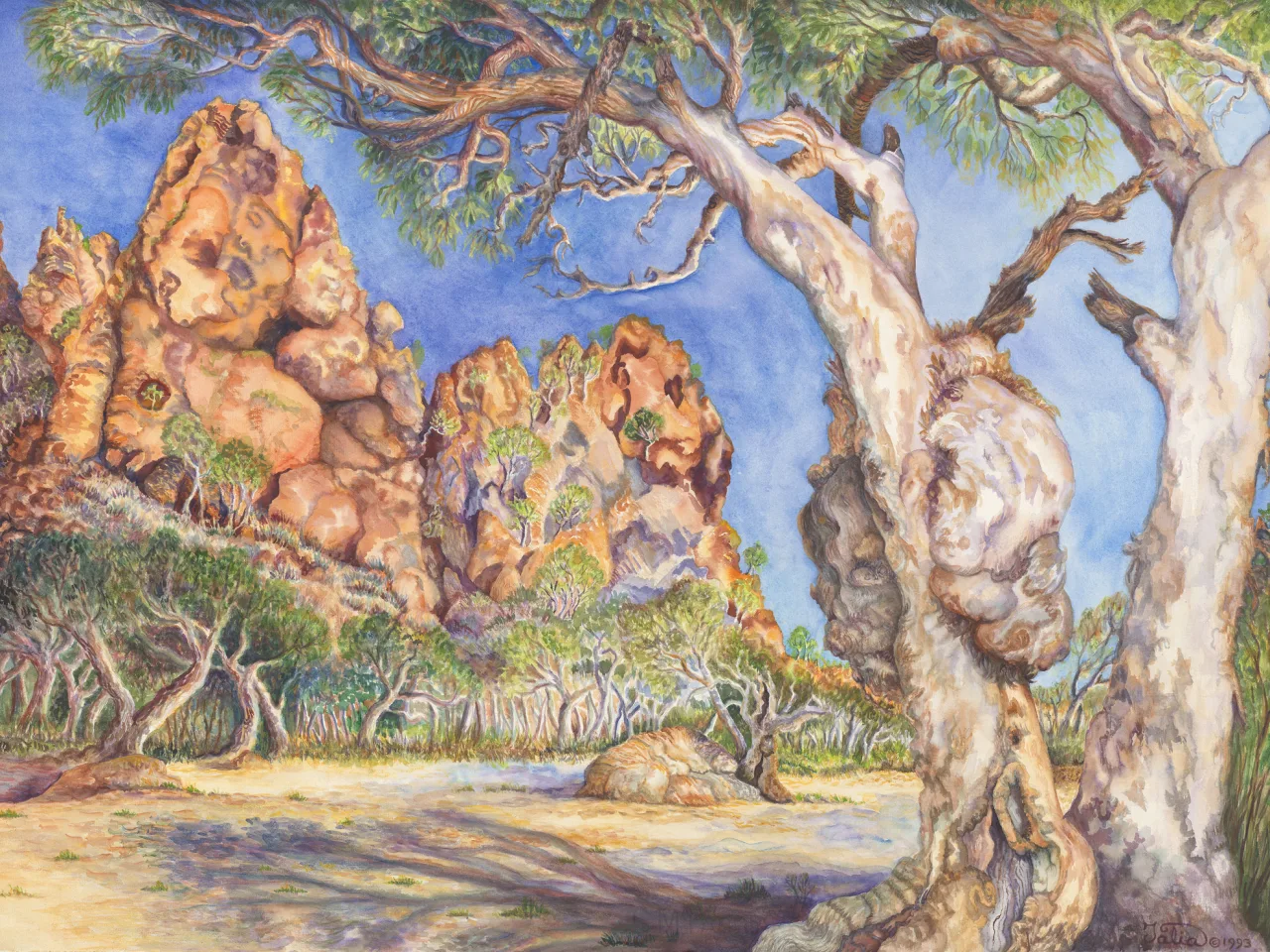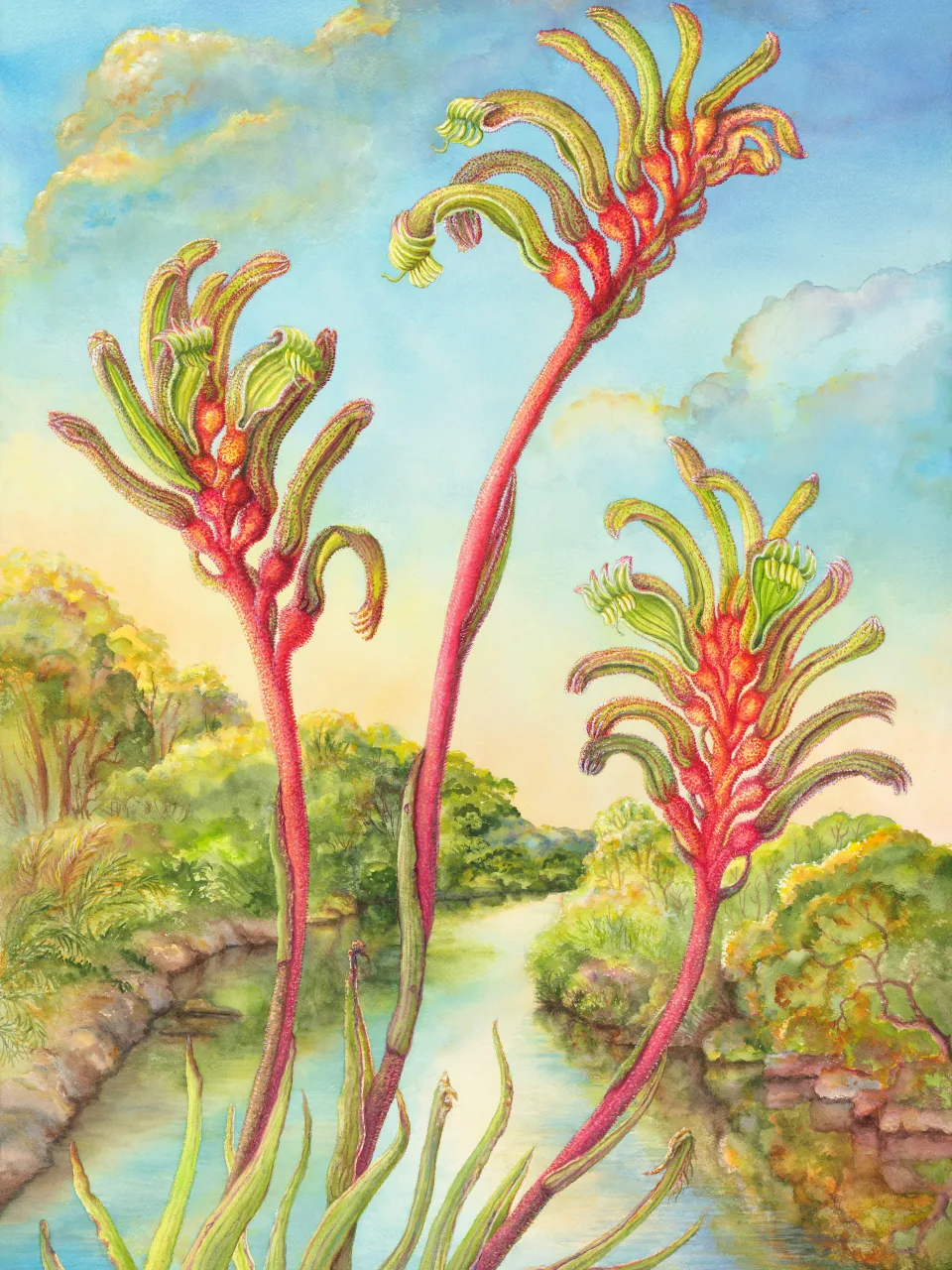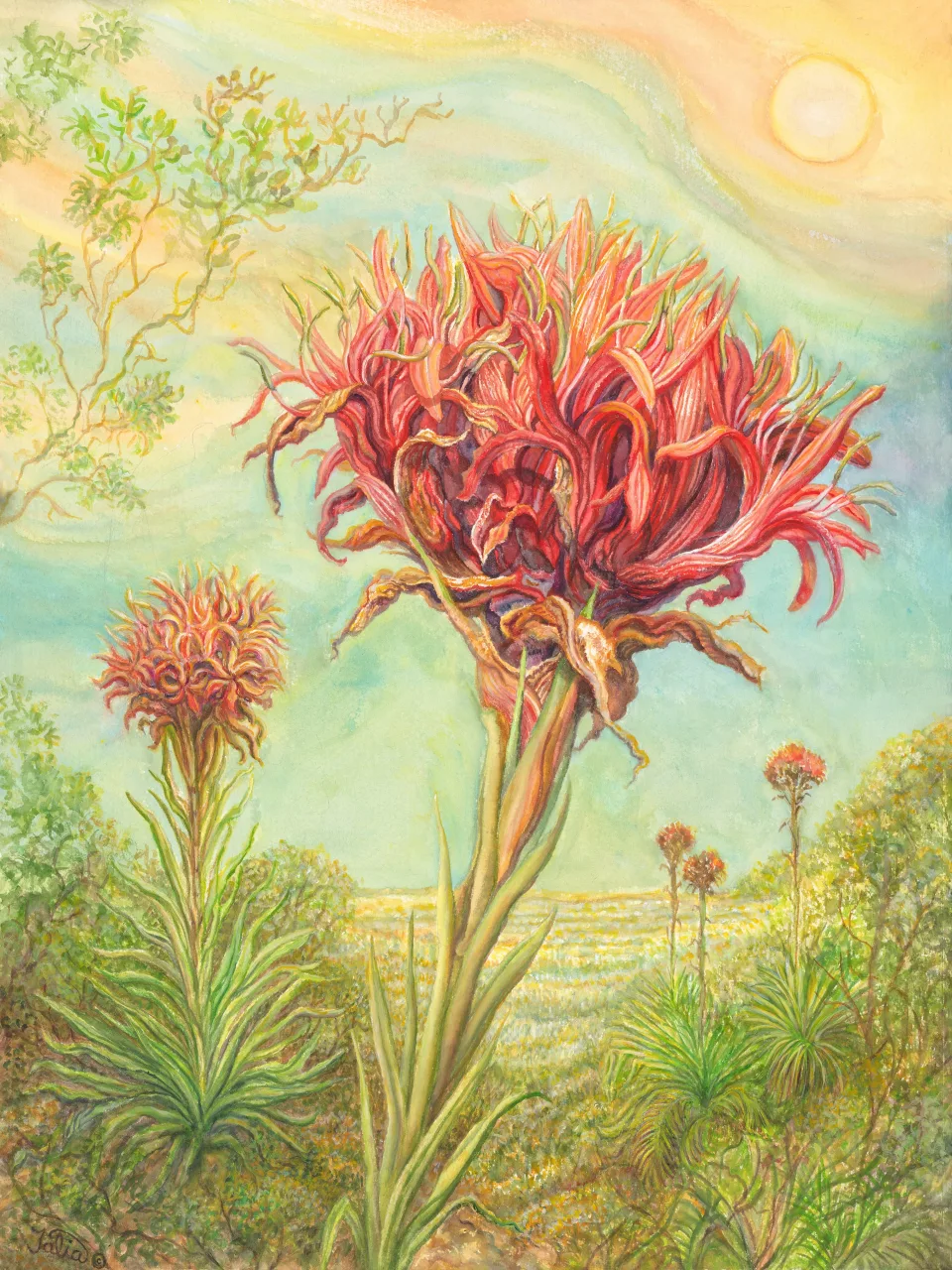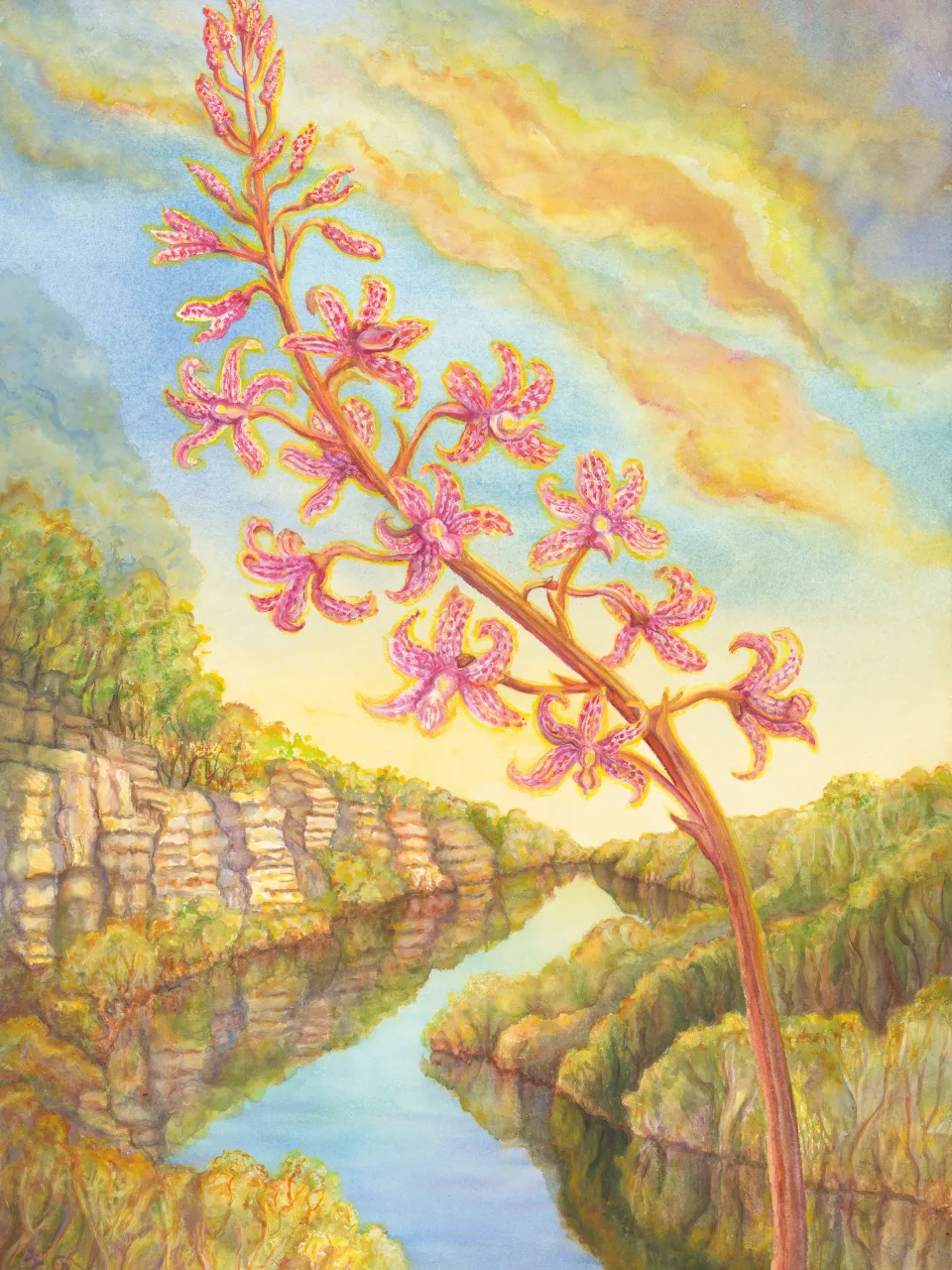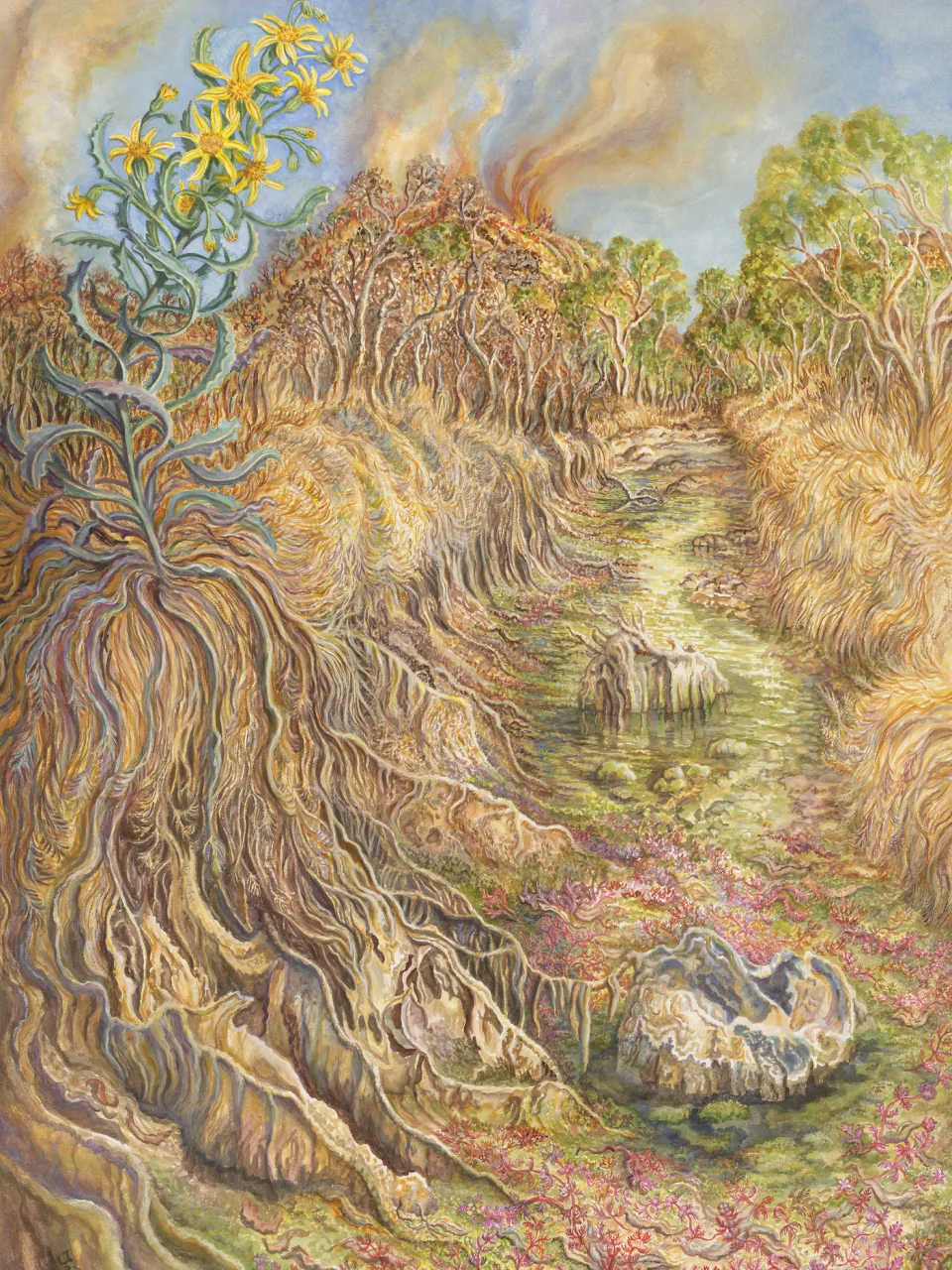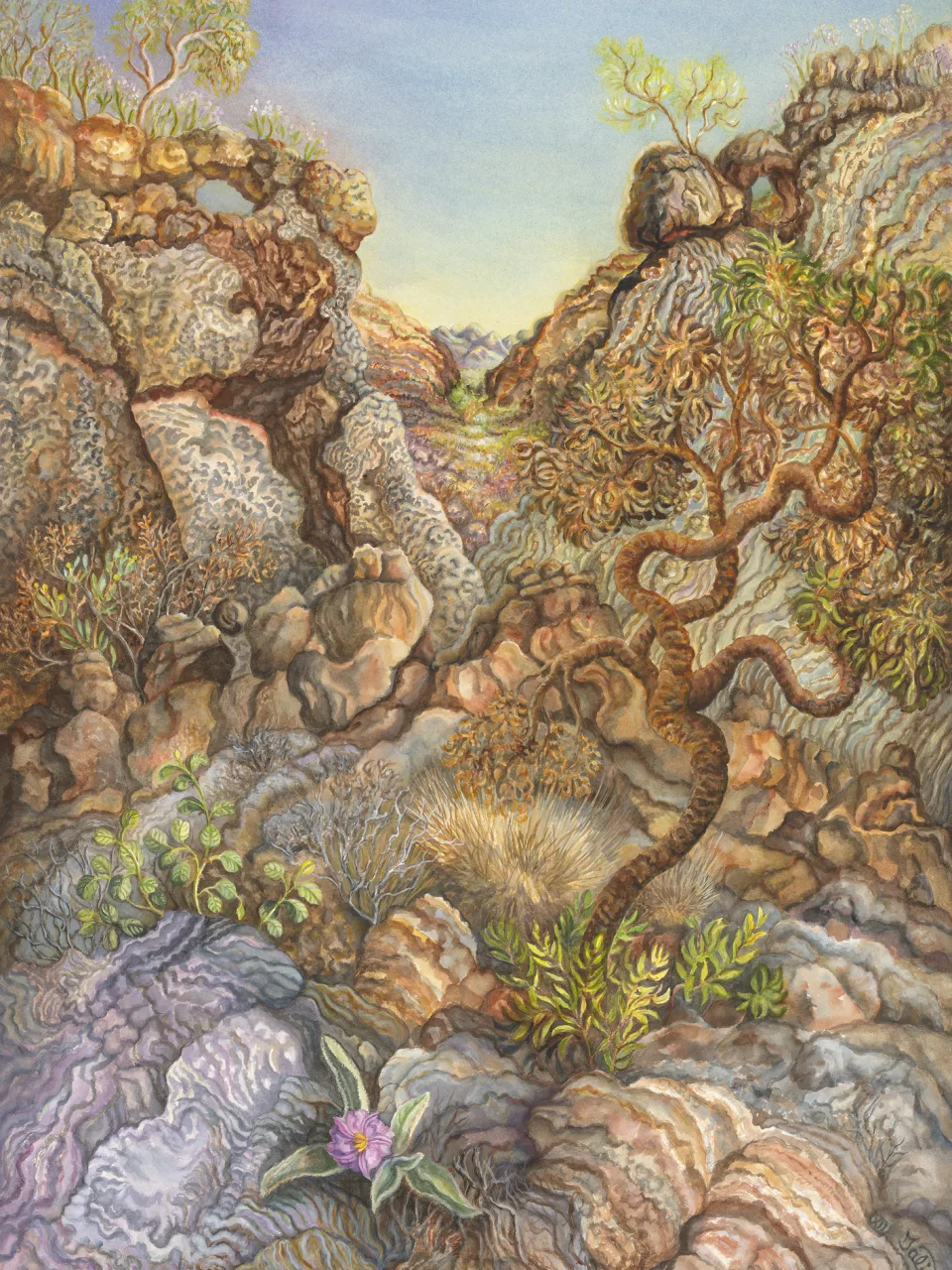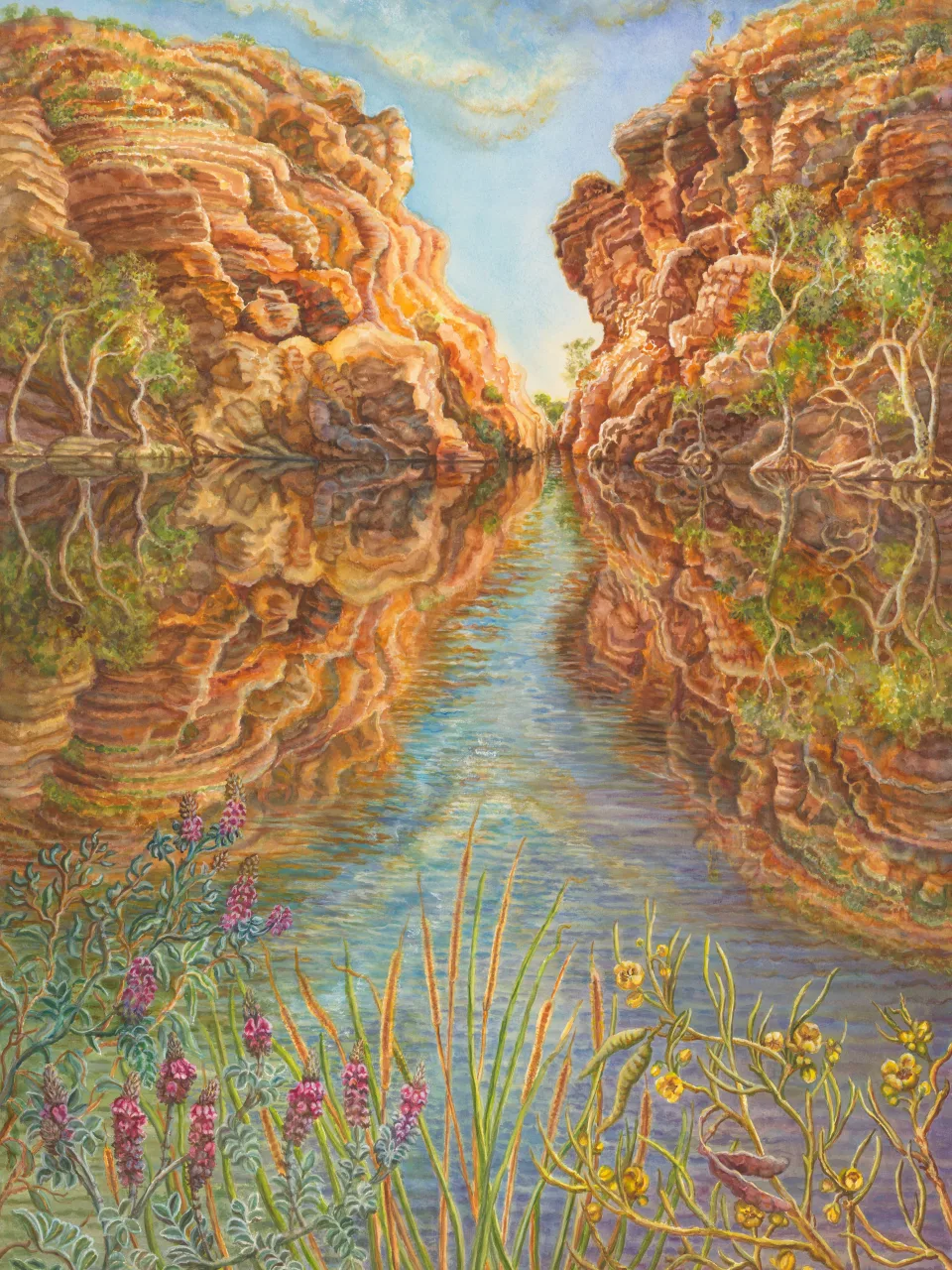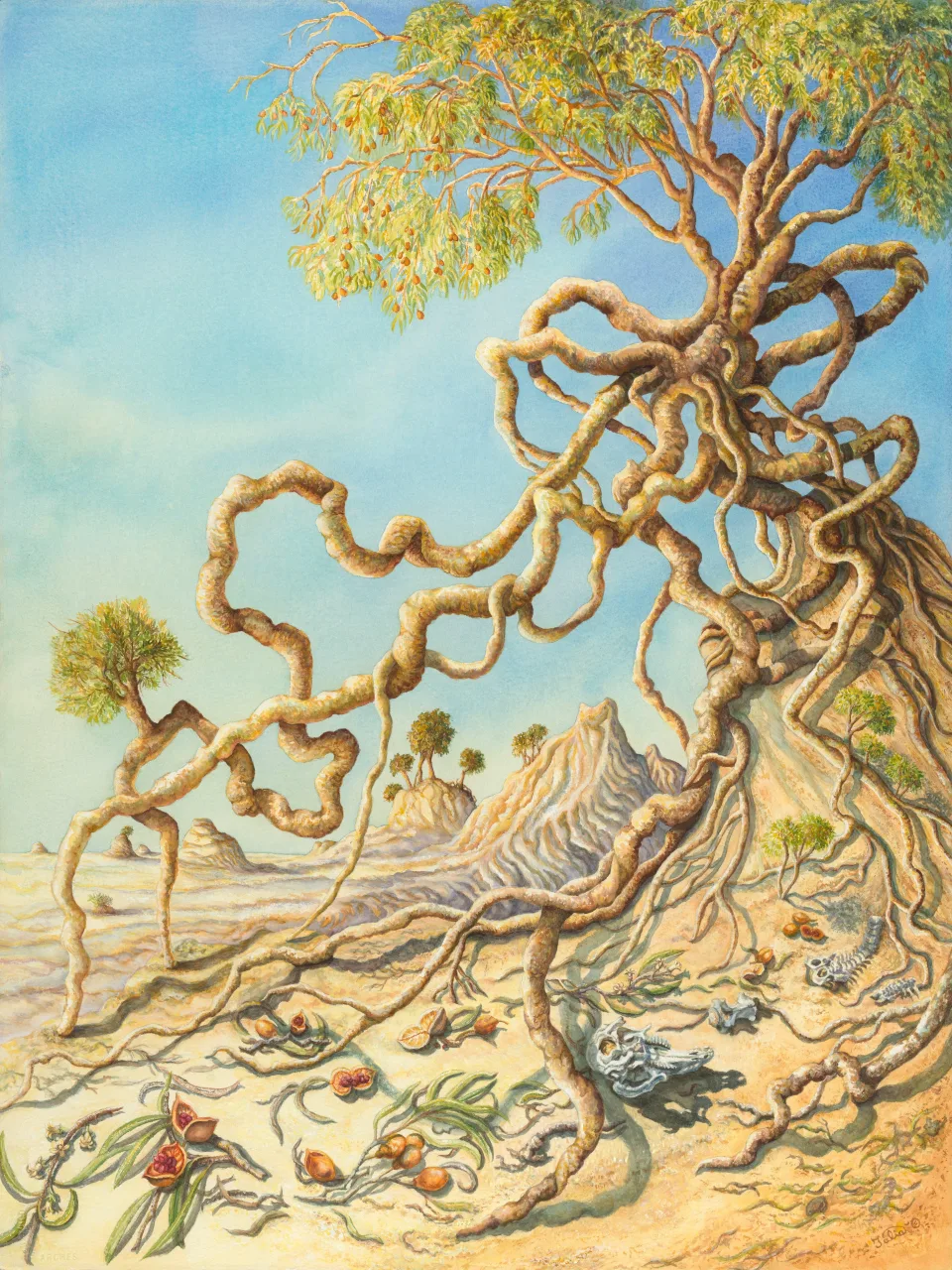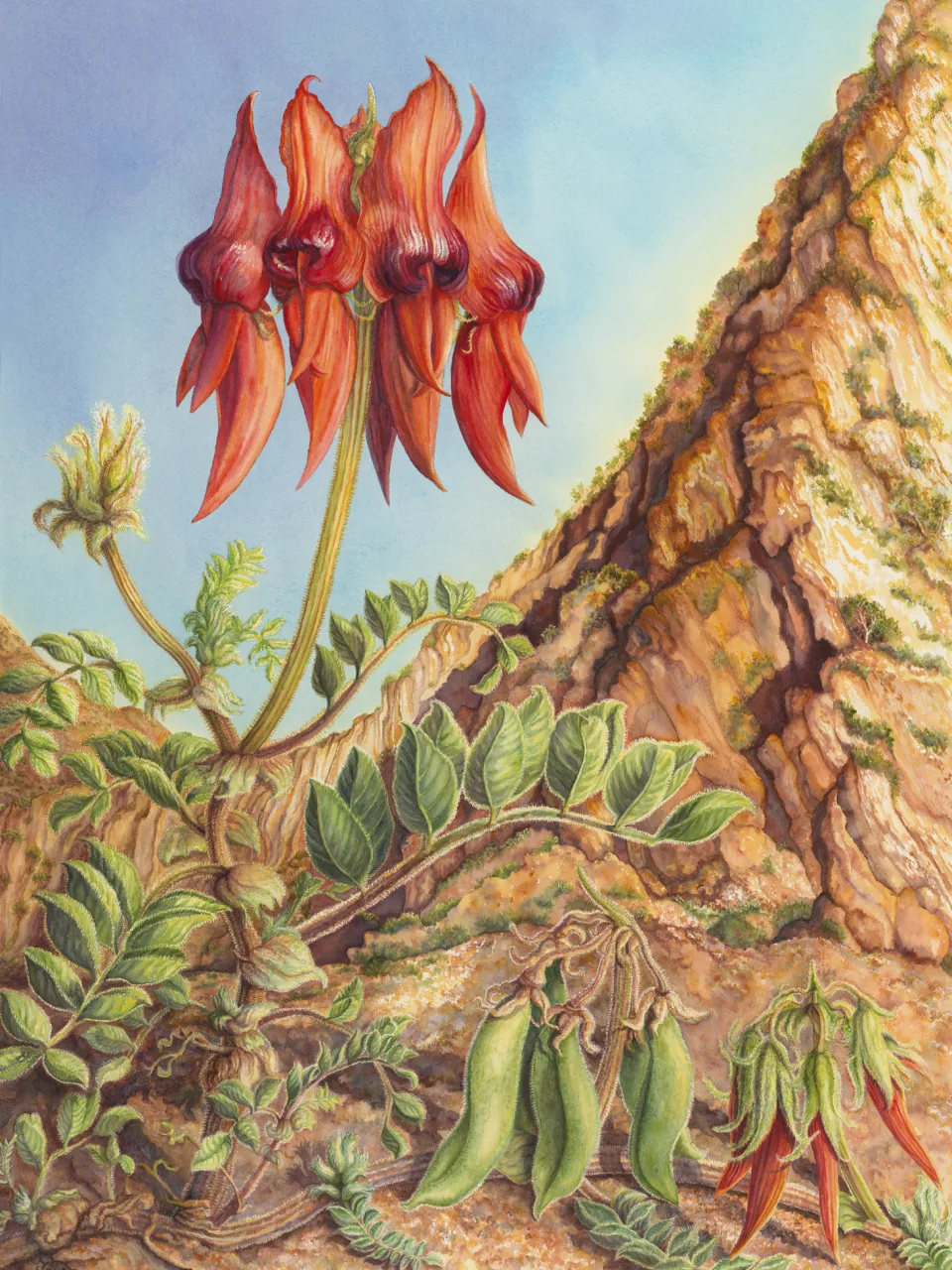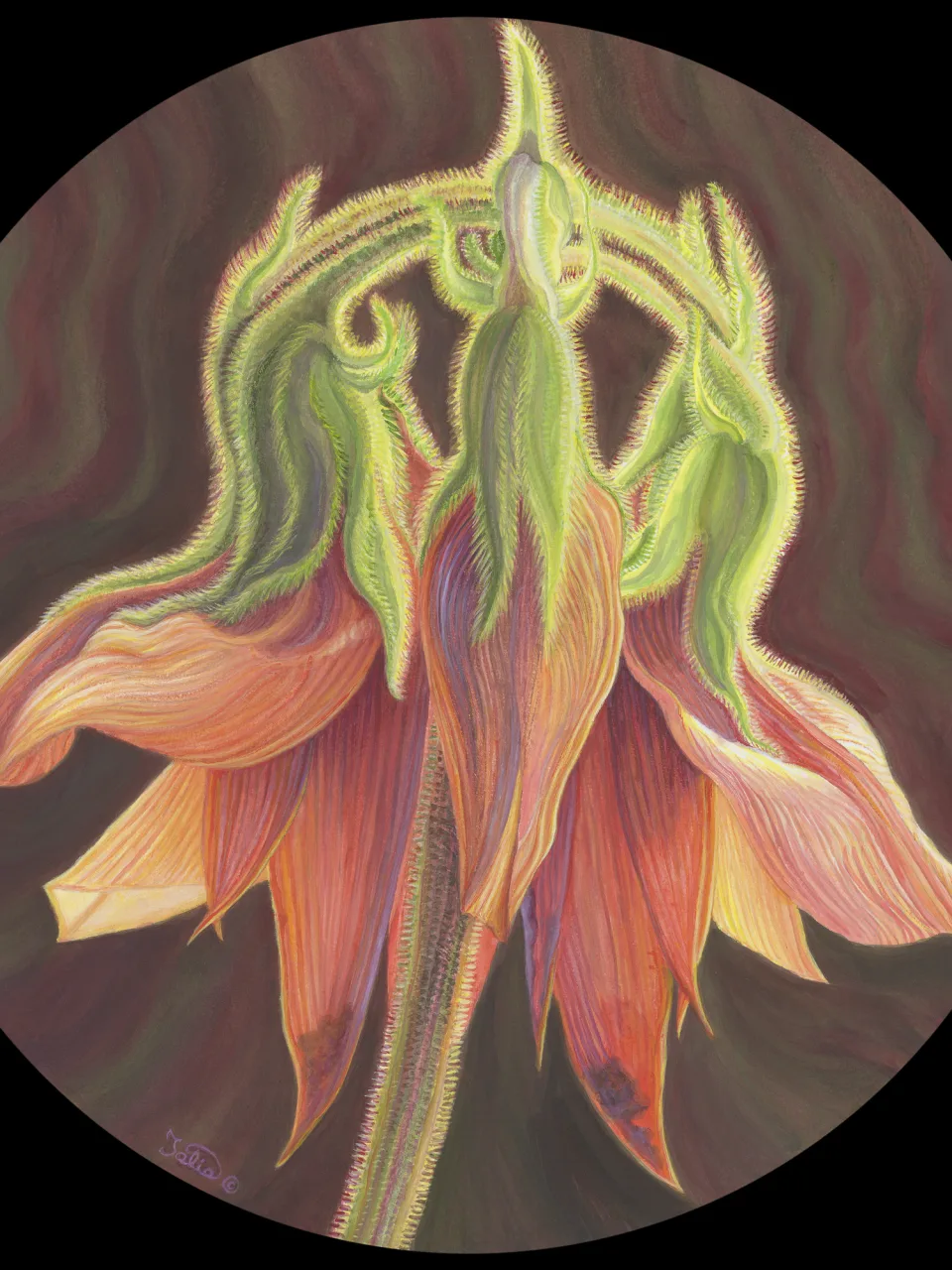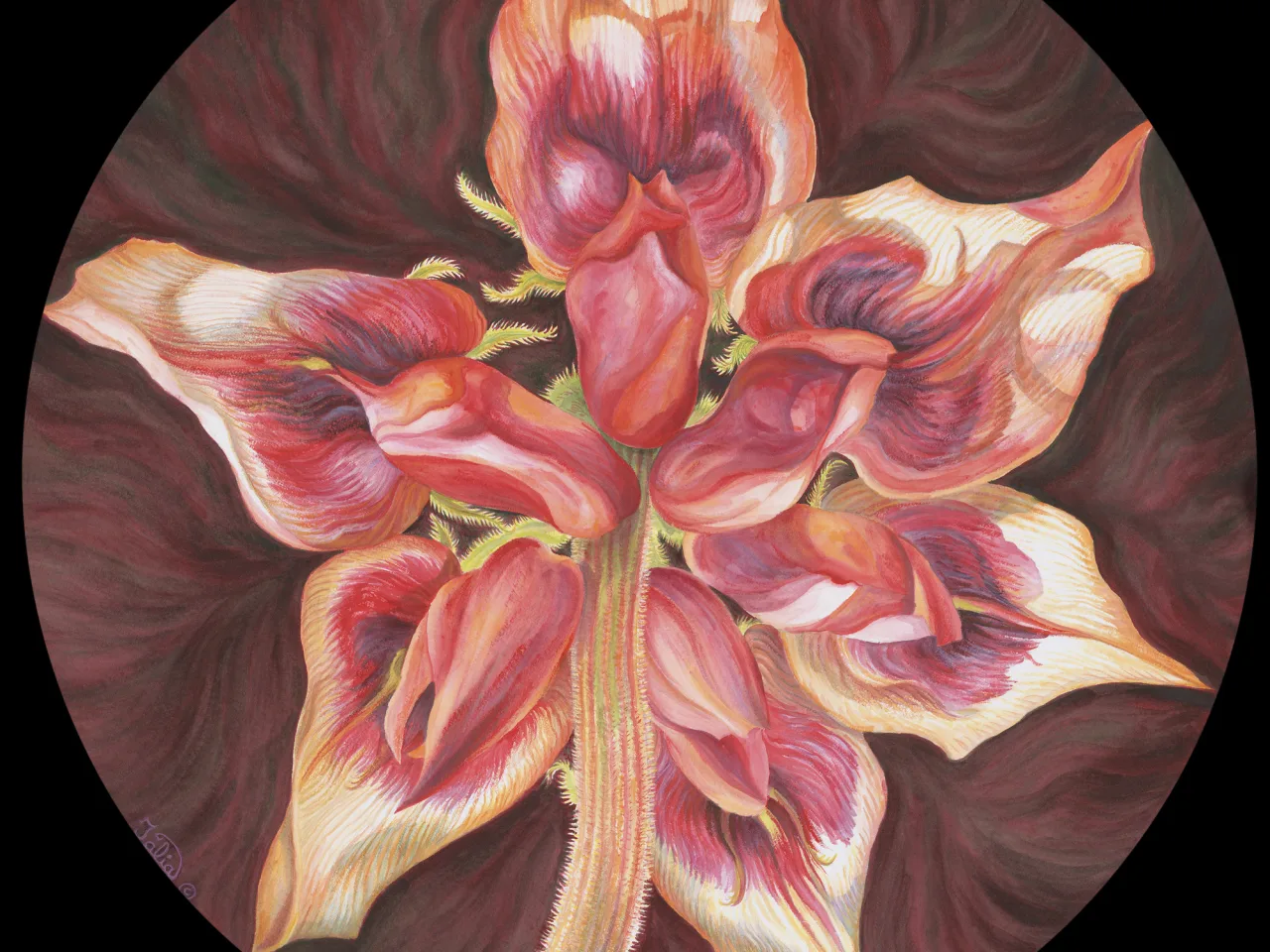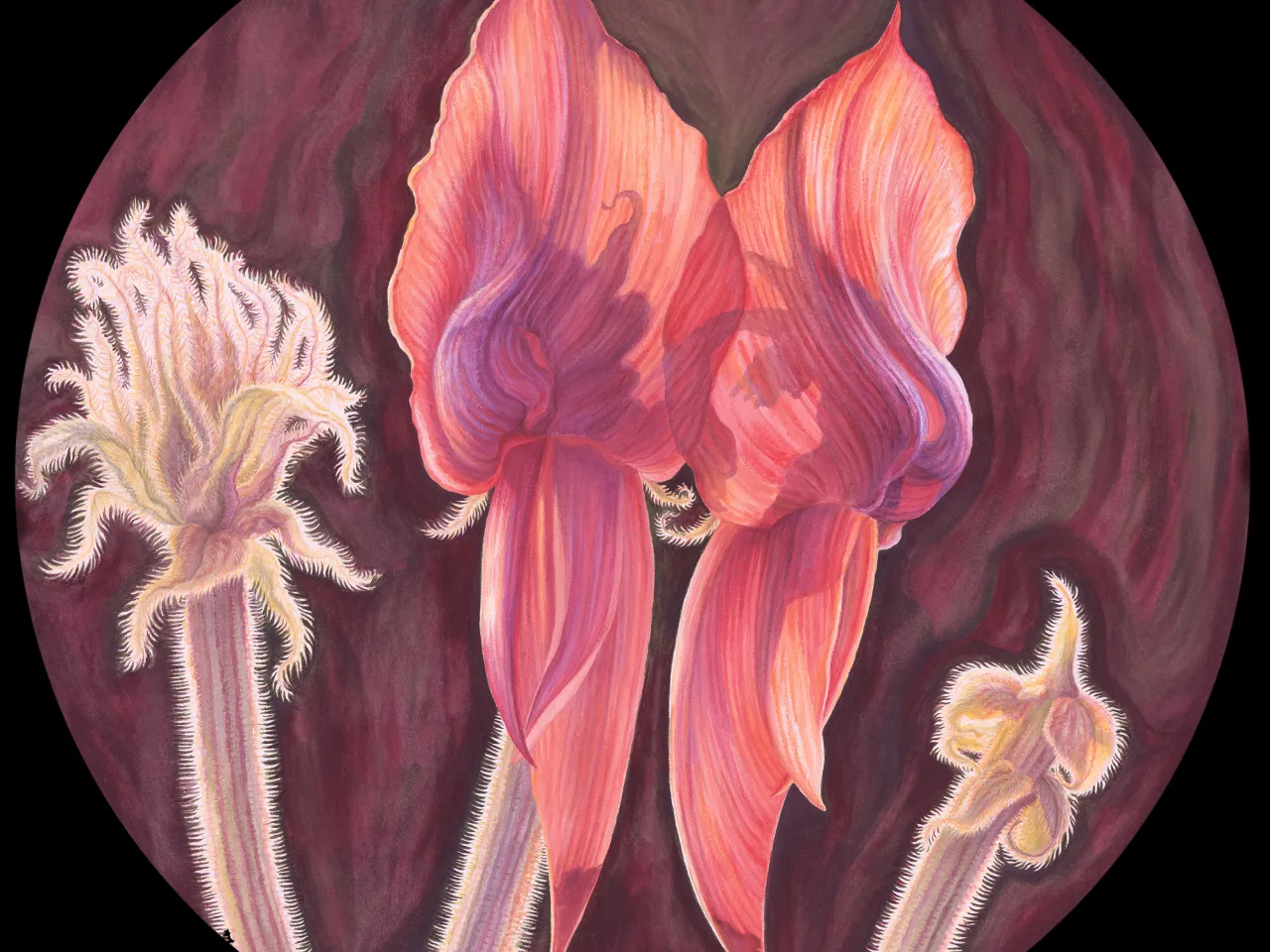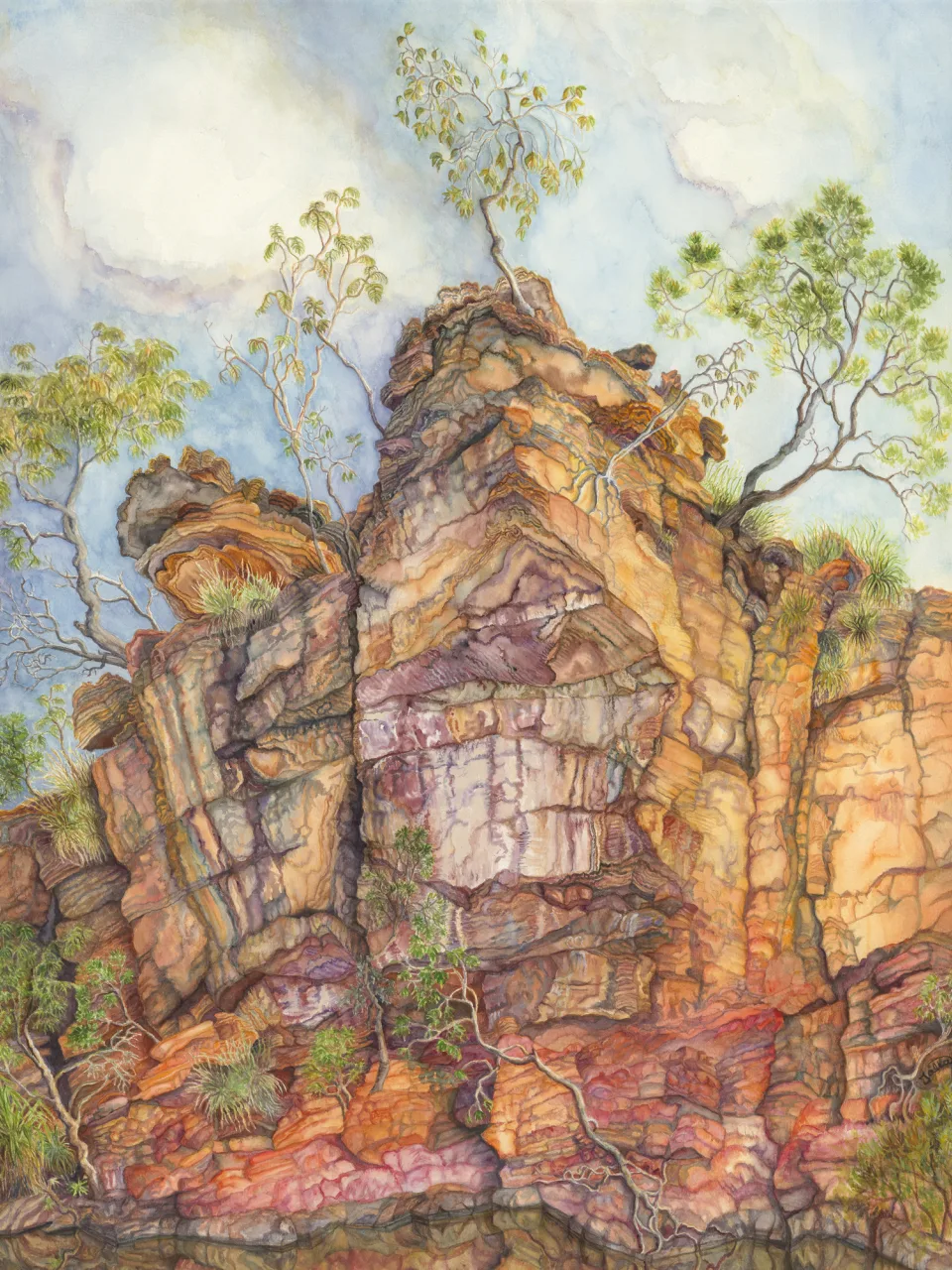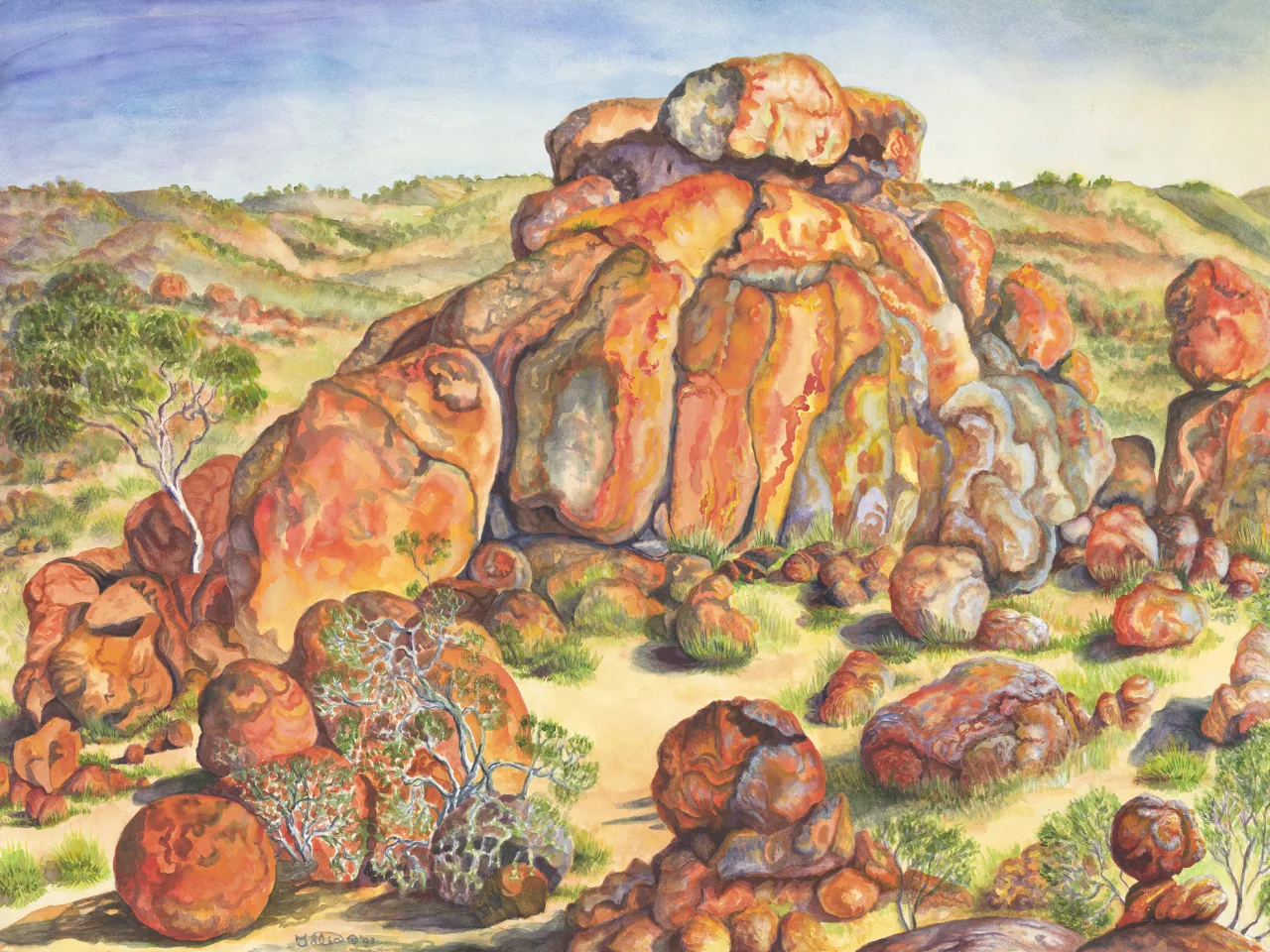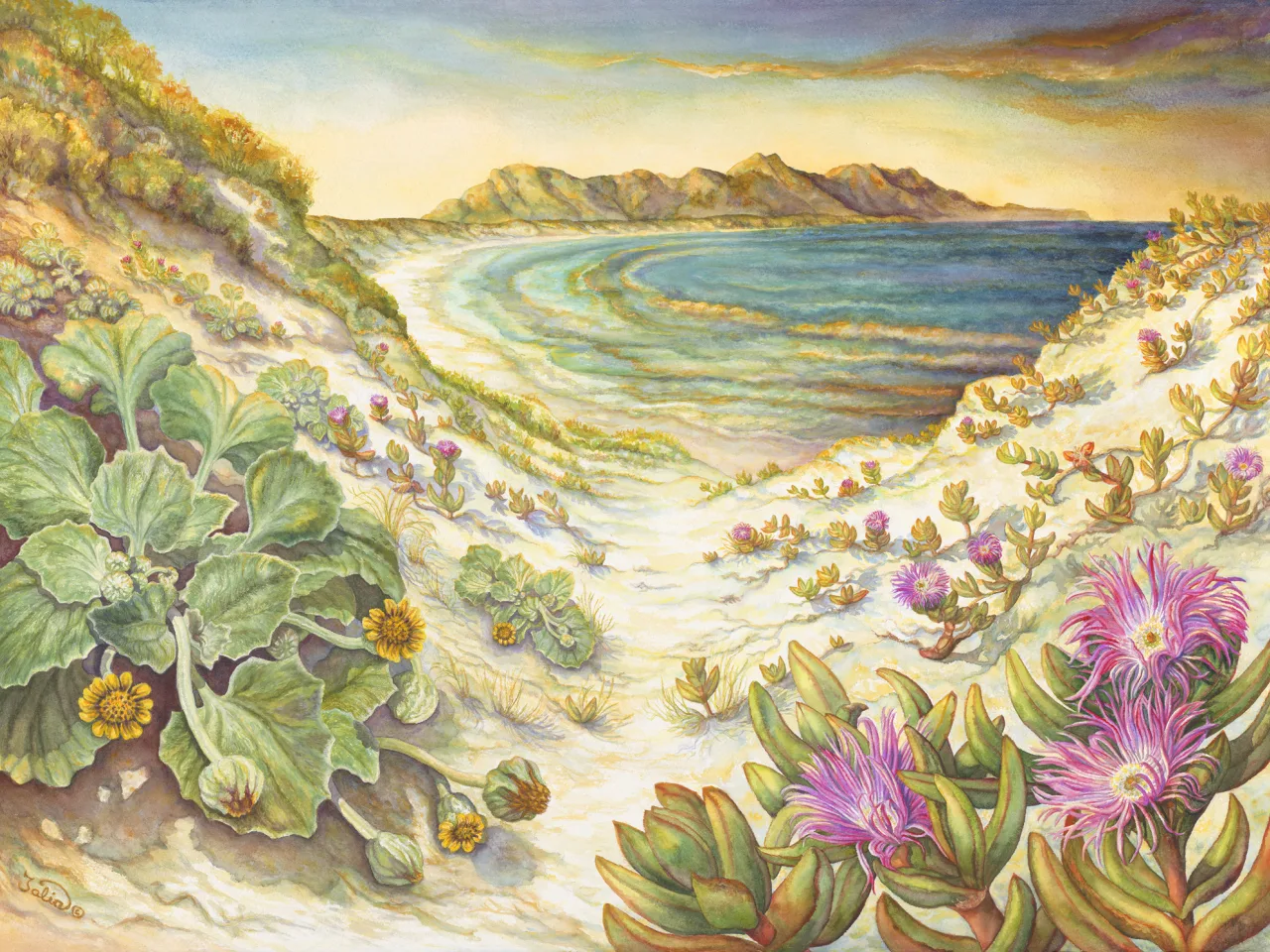Artwork 7 Fire-Fern and the Bushfire Sun
Section 7
"Fire-Ferns" of the North—Ancient Cycads of Northern Australia
Litchfield National Park, Northern Territory, Northern Territory
- 1. Cycas armstrongii (fire-fern)
Artwork 7
Buy a print
Limited edition giclee archival quality print on 310 gsm Ilford cotton rag (from an original work in watercolour on watercolour paper, 76 cm high x 56 cm wide)
from the artist
This painting is part of a pair celebrating the fire-adapted Cycas armstrongii in a landscape reflecting the subtle light shifts that accompany bushfires by day and by night. Both feature the same female cycad, from different perspectives.
Travels in the Northern Territory inspired these works.
On the outskirts of Litchfield National Park, in the Top End, a recently burnt area of bush attracted our attention. There was luxuriant new green growth on palm-like trees, accompanied by large central cones on some, and by a circular array of wizened orange-brown balls on others. They were cycads—ancient male and female plants displaying new leaves after seasonal fires—hence the local name “fire-ferns”. However, they are not ferns or palms, but plants whose ancestors first appeared in the fossil record about 300 million years ago (Hill et al., 1999).
Having observed many Top End fires after that first experience, as well as the aftermath some months later when many stages of new growth were displayed, I decided to paint a series of artworks to celebrate Cycas armstrongii, one of the remarkable “fire-ferns of the North”. This species is endemic to Australia, specifically to the northern parts of Western Australia and the Northern Territory, where there are annual seasonal fires.
In this work, while the Sun is partly obscured by smoke-filled haze, strong daylight still lightens and softens the outlines of new growth, the mature seeds in their ovules, the twisting, dancing “sporophylls” (leaf homologues), and the diamond-patterned trunk.
Many of the features of these cycads appear in the fossil record, and reflect how conditions on Earth—such as temperature, oxygen levels, and which animals were present—changed over hundreds of millions of years. Cycads evolved early and they reflect this in multiple ways, such as how they reproduce—with pollination assisted by some of the most primitive beetles alive today (Jones, 1993/2000).
You can see examples of the same diamond-shaped bark in the fossil record. One of the most studied giant club mosses of the Carboniferous (about 359–299 mya), named Lepidodendron, had a diamond-shaped pattern on bark and stems, indicating the point of attachment of leaves, and it was thick with a high lignin content—which does not burn well. In Cycas armstrongii, the lower leaves drop off leaving short thorns attached to the diamond patterns (serving to ward off grazing herbivores).
